|
During the Second Saturday Artwalk each month in Old Town Bay St. Louis, you'll find cool deals, fresh meals and lots of art and live music. It's the way we throw a family-friendly party here in the Bay and you're invited!
Be sure to visit Hot Spot businesses Biz-zee Bee, 111 Main Street, and Social Chair, 201 Main Street! - stories by Denise Jacobs, photos by Denise Jacobs and Ellis Anderson
Biz-zee Bee
111 Main Street Bay St. Louis 228.467.1104
During the artwalk, from 4pm - 8pm, Biz-zee Bee will be having live music and kid-friendly goodies.
Biz-zee Bee has been a coastal favorite since relocating to Old Town from Hwy 90 in 2008. The shop sells children's clothing and accessories - and embroiders.
“Biz-zee Bee is like two stores in one," owner Janelle Graham explains, gesturing toward three high-tech sewing machines behind the register. It’s where Janelle Hilliard, Janelle's aunt, operates the machines, adding custom embroidery and monogramming to items purchased at Biz-zee Bee and elsewhere. In addition to the best in seasonal children's clothing, smocked baby clothes, and nautical wear for the young crowd, Biz-zee Bee caters to local dance troupes, with shoes and clothes for ballet, jazz, and tap. And while it is a children's shop, two adult brands are also carried: Charles River raincoats and Comfort Colors BSL T-shirts. Gift-wrapping is free, too, making the shop easy for shower-shoppers. After 12 years of serving the Bay area, Graham and Hilliard are most proud of their small-town personal level of customer service. "It's what keeps people coming back," Graham says, adding that she has made a lot of friends through the years. "You really can't beat the Old Town shopping experience.” For the latest in children's fall fashions, stop by Biz-zee Bee for Second Saturday hours and enjoy live music and kid-friendly goodies. Beat the rush on your special embroidery needs and holiday shopping. The embroidery drop-off deadline is December 15; don't miss it!
Social Chair
201 Main Street Bay St. Louis 228.466.5853 During the artwalk, from 4pm - 8pm, Social Chair will be having live music, a pop-up park for kids, dip-mix samplings, and a gift w/purchase give-away.
At 201 Main Street, Social Chair is an Old Town fixture. Owned by Yuki Northington, who holds degrees in fine art and interior design, the store opened shortly after Hurricane Katrina demolished the town. Despite the devastation that surrounded her, she spotted a niche to be filled, and she filled it.
Social Chair hums with positive energy year long, and those shopping for their homes will find furniture, tableware, and luxury bedding. Others will find trendy and sparkling jewelry to their liking. During the holiday season, the store sings with an eclectic variety of ornaments and seasonal decor. Yuki is especially excited to offer a new line of handmade Seagem oyster pottery out of Louisiana. Get a jump on your holiday shopping at Social Chair, and stop by for live music, a pop-up park for kids, dix-mix samples, and a gift-with-purchase giveaway. At the end of the night on Second Saturday, some lucky person is going to walk away with a handmade Swarovski crystal creation, one of Social Chair's top-selling pieces. It might be you!
Sponsor Spotlight - November 2017
A rare bird in the world of residential construction, Crane Builders is equally at ease with small projects and grand ones, new construction and sensitive historic renovations. Find out why a commitment to quality has made this two-generation company keeps clients coming back time and time again.
- story by Ellis Anderson
But Jackye’s education goes beyond learning the value of high standards from her dad. In 2010, she graduated with honors from LSU’s prestigious Engineering School with a degree in Construction Management. She keeps up with the latest advances in materials and tools, merging the best of the high-tech world with Old World craftsmanship.
This commitment to quality has served the Cranes well: more than three-quarters of current clients now come from their 40-year pool of previous customers. Homeowners like the Riveres (who have used the Cranes for several major home projects through the years) give rave reviews. The Riveres cite multiple reasons for their satisfaction on their new home, including custom design touches and the fact their house was finished four months ahead of schedule.
Jackye says that while that’s not always the case, conservative completion date estimates are standard.
“We don’t want to let anyone down, so we like to overshoot,” Crane says. “We’d rather have them thrilled that we’re early. Also, our quality control is all-important and we don’t want to rush for a deadline because of unexpected weather-related or material delivery delays.” Another factor in the quality control is the long-term relationship the Cranes have built with their sub-contractors. They use only like-minded subs and are able to pair different subs with different jobs. For instance, if someone wants standard wiring, they might call on one electrician. If owners want a “smart-home,” they’ll call in a sub who specializes in built-in home electronics.
While the Cranes will happily take on the most ambitious new residential project, they’re also experts in making the most of an already existing home. “Renovations are a whole different animal [from new construction],” Jackye says. “It’s our niche. Not many people are willing to take on those special challenges.” In one recent project, the Cranes were called in to explore the possibilities of building a new house for Pass Christian residents. The family of six had moved full-time into what had been their weekend home. They were bursting at the seams and needed more space. Instead of starting from scratch, the Cranes were able to devise a plan that utilized the existing home’s unused attic space. The final project created an additional 750 square feet that included a stairwell, two bedrooms, a bath and a den. “We love challenges like that,” Jackye says. “We excel at finding creative solutions, which can often save the homeowners a lot of money.”
In another current project, the Cranes are back working at a home they renovated a few years ago. In "Phase One," the garage was converted to a two-bedroom/one-bath poolhouse, and a porch was built overlooking the new pool, fountain and garden. In the main house now, two bathrooms are being renovated, while a breakfast nook/family room has been created, opening up the kitchen to the living area.
In Bay St. Louis, the Cranes worked with other loyal clients to renovate their historic beach home’s kitchen. A dated acoustic tile ceiling was removed, exposing “gorgeous” moldings and bead-board ceilings. Right around the corner, a shabby back wing has been torn off another historic house, with plans to open up the kitchen to a new great room addition. And the Riveres will be clients again soon – the Cranes are slated to build a pool and a cabana. And since the Cranes are veterans at working in the historic districts of both Bay St. Louis and Pass Christian, they're also well-versed on the historic guidelines of each city - which makes for smooth sailing when appearing before local historic preservation commissions. But while they often work on grand, historic homes and high-profile beach home projects, the Crane's approach smaller projects with equal care. Jackye explains, “We build small-budget new houses too, working with clients to get them what they want and still meet their budgets." “And you don’t have to look for a handyman for a smaller renovation projects. We take those on too – for instance, a half-bath update. Our regular customers know that and don’t hesitate to call us back for smaller jobs.” Although, Jackye’s at the helm of the business now, father Jimmy still stays fully involved. And the family construction business expanded again in 2016, when Jackye married Chris Hansen - owner of Hansen Custom Painting (and third-generation painting contractor). Hansen had been a favorite subcontractor of the Cranes since 2003. It turned out the Chris and Jackye had more in common than a devotion to quality control. The two have a new son, Andrew Wolfe Hansen. “We love what we do,” Jackye says. “And working on projects together as a family makes projects even more satisfying.”
Vintage Vignette - Oct/Nov 2017
What many believe is the finest antique store on the coast is also a place where customers feel like they're right at home.
- story and photos by Karen Fineran
Countryside Antiques, 151 Highway 90, Waveland; 228-467-2338; www.csantiques.com, or find them on Facebook. Open Wednesdays through Saturdays from 10 a.m. to 5 p.m., and on Sundays “by chance” or by appointment.
A woman who was obviously a long-time friend and customer of Mike and Tom immediately struck up a conversation with me about the small jewel-like contents of the glass counter in front of us. Recognizing that I was not a regular visitor to the gallery, she animatedly pointed out to me each of the delicate items that she thought was a particularly good deal.
“This one,” she stated confidently, pointing to a glittering platinum and sapphire ring. “And these here,” gesturing to a pair of dangling gold and diamond earrings, “these are both really fine pieces, and an amazing deal. I’ve bought all of my jewelry here for the last twenty years,” she confided with satisfaction. “This place has the absolute best prices on jewelry and objects d’art that I’ve ever found anywhere – and believe me, I’ve looked around!” As I wandered over the next hour through the expansive space of the gallery, with its aisles of glass showcases and nooks of porcelain treasures, I chatted with several other customers. It became clear to me that, to the antique enthusiasts of the Gulf Coast, Mike Mayo and Tom Cottom are more than just store owners. “Tom and Mike are charming guys . . . incredibly knowledgeable about antiques . . . helped us get our houses back together after Katrina . . . Mike and Tom are the best.”
Antique connoisseurs Tom Cottom and Mike Mayo moved to this area from New Orleans nearly forty years ago, buying the building at 51 Highway 90 in Waveland in June 1978 and establishing Countryside Antiques.
Steeped in heirlooms and history, and surrounded by azaleas, the gallery has become a fixture in Bay/Waveland. It shows off Tom and Mike’s hand-selected and constantly changing collection of European antiques from the 17th to 20th centuries. Countryside specializes in items from France and England, and most of the antiques date prior to 1900. The varied collection includes furniture, silver, oil paintings, art glass, Majolica (finely painted pottery from the 19th century), English Delftware, Staffordshire porcelain, cut glassware, Persian carpets, jewelry, cast iron planters, and miscellaneous decorative objects.
Lauded by many as the go-to shop for European antiques on the Gulf Coast, the store’s stellar reputation seemed to me well deserved. Among row after row of well-lit glass showcases and hand-carved wooden furniture, I came across lovely vignettes of whimsical porcelain dogs and other creatures, French armchairs, crystal chandeliers and sconces, brilliantly illustrated 18th century books, brightly colored plateware, imposing mirrors, gilt-framed oil paintings, intricate woven carpets, crystal serving pieces, unusual lamps, and sterling silver urns. The owners have even converted the traditional screened porch of the residence into a separate showroom for more rustic pottery, furniture and décor items.
One factor that makes Countryside Antiques stand out among the many other furniture stores and boutique shops in Bay St. Louis is that the owners’ passion is antiques, and antiques are all that they sell. You won’t need to sift through new items and reproduction vintage pieces in order to find the true antiques. There, you will find many examples of the European furnishings typically found in old Mississippi and Louisiana estates and plantation homes. These antiques harken back to the history of our Gulf Coast, reminding us of who we are and where we have been. Over the last forty years, Mike and Tom have earned their reputation for quality and knowledge in the antique trade. Shopping at random for antiques can be a tough proposition for those who lack a professional eye. It’s difficult to know what’s reasonable, what’s authentic, and what’s mostly creatively marketed smoke and mirrors (read: junk). The help of knowledgeable curators like Mike and Tom, who work with their customers on a personal level to help them appoint their homes, can make all the difference.
Tom and Mike’s clientele come primarily from the South. There are the devoted locals who scour the shop on a regular basis, and there are the loyal New Orleanians who make a special point to stop and browse every time they are in the area. Clients from Memphis, Houston or Atlanta will call Countryside on a regular basis, to ask Mike and Tom about particular items that they are seeking.
“Many of our clients are discerning collectors, dealers and designers. Some of them are private collectors, and some of them are in the design trade and buying for their own clients. When they need something, they give us a call first, because they know that we are likely to have the particular item that they’re looking for,” explains Tom. Tom and Mike travel to Europe every year to hunt down their bargains at markets and from estates. By doing their own buying, they eliminate upcharges from middlemen, and pass those savings on to their customers. They also sometimes take their shop on the road with them, especially in the Southern states, traveling to well-known antique shows and events such as the Original Round Top Antiques Fair in Round Top, Texas (the “Big Red Barn”). Antiques give individuality to even the newest of homes (or offices), and impart a sense of history and refinement. “When you buy antiques, you end up with something unique and original, and it’s usually much better quality – and still, it’s often less expensive – than similar objects that are new. And we have such a variety of pieces here, I think that we probably have something for everyone’s taste and budget,” noted Mike.
The store receives new shipments of antiques from England, France and Belgium on a regular basis, so if you check back frequently to see what they have, you stand a good chance of finding the right treasures to enhance your home for years to come.
During the Second Saturday Artwalk each month in Old Town Bay St. Louis, you'll find cool deals, fresh meals and lots of art and live music. It's the way we throw a family-friendly party here in the Bay and you're invited!
Make sure you visit Hot Spot businesses Heart of Old Town Vacation Rental, 109 N. Second Street and Sonny's Cypress Café, 300 S. Second Street! - story by Denise Jacobs, photos by Ellis Anderson
Heart of Old Town Vacation Rental
109 N. Second Street Bay St Louis 228.493.6316
Be sure to stop by for a tour of The Heart of Old Town Vacation Rental on Second Saturday, October 14, between 5:00 p.m. and 7:00 p.m. Rest a spell on the new balcony and BBQ area, and enjoy the band, songs, and jokes courtesy of Sylvia and Ed. Food and drinks will be provided courtesy of the Ulman Tea Room and Garden.
The Heart of Old Town Vacation Rental, a spacious 1300-square-foot cottage, nestles against the side of Antique Maison at 109 N. Second Street.
Ed and Sylvia Young bought the building as a fixer-upper in 1990 and moved it to its current location. Living in New Orleans at the time, the Youngs embarked on a journey that will resonate with many full-time Bay residents. After purchasing the home and making weekend trips from New Orleans for two years, the couple moved permanently to Bay St Louis in 1992. The building was fully renovated in 1995 and opened for business. The vacation rental has been offered since 2009. Sylvia, the property manager, makes sure that guests enjoy all the comforts of home in her two-bedroom, two-bath, seaside-themed vacation rental. Guests will find a washer and dryer, a full kitchen, and even a crib. Aptly named, the vacation rental is truly in the heart of Old Town, and guests will find it easy to navigate on foot to the harbor, the beach, and the local shops. More information about the vacation rental can be found on VRBO.com/25621.
Sonny's Cypress Café
300 S. Second Street Bay St Louis 228.466.4877
On Second Saturday, October 14, Sonny’s Cypress Café will provide a band on the patio from 5:00 p.m. to 7:00 p.m. The Second Saturday crowd will enjoy appetizers from the main menu. Think hummus, stuffed grape leaves, spanakopita, and caprese. Think delicious!
Sonny’s Cypress Café is a dream come true. Literally.
When it was simply the Cypress Café, Sonny Wright stopped by every time he visited family in the Bay. Sonny's dream was to one day own the café and revamp it with a strong Mediterranean influence. When opportunity presented itself, Sonny and his wife Denise snapped up the restaurant, located in the historic city hall building. Recent updates include spacious seating space for more than 70, white-brick walls reminiscent of Greece, black woodwork, and cloth-covered tables. The café lends itself to an Italian and Greek vibe—fitting, as Sonny’s heritage is both. Expect a wide variety of mouth-watering choices for every meal. A favorite breakfast entrée is Eggs Shakshuka—eggs cooked in a spicy tomato sauce with sausage, onions, and peppers.
For lunch and dinner, offerings include traditional Mediterranean fare, along with pasta dishes that rotate daily—Pasta Alla Norma, fried eggplant tossed in tomatoes and fresh mozzarella cheese; Pasta Carbonara, linguine with Bianco cheese sauce, bacon, caramelized onions, and peppers; and Pasta Spinach, sautéed spinach and onions with freshly grated cheese. Gary Veglia, local restauranteur, one of the cafe's first patrons, recommends the moussaka.
Guests can always find vegan and vegetarian dishes and gluten-free pasta. Classic burgers and paninis are also available. Leave room for bread pudding, baklava, or cheesecake. And don’t forget the wine! Natasha Actuaymi, manager, encourages patrons to bring their own beer and wine for a cork fee of $5.00. Hours are Monday through Saturday, 7:00 a.m. to 8:00 p.m. On Sundays, a special brunch menu is featured from 11:00 a.m. to 3:00 p.m. Parking is plentiful in front of the building and along the side of the building toward the old City Park.
Sponsor Spotlight - October 2017
The boutique that's brought a "little bling to the Bay" grows more every year. Owner Melissa Hamilton explains why.
- story and photos by Ellis Anderson
bijoubel Boutique: 126 Main Street, Bay St. Louis - open seven days
Joan Vass Off Broadway: 124 Main Street, Bay St. Louis - open Monday - Saturday
“The quality is just amazing,” says Melissa. “Most of the pieces are 100% cotton, a really substantial knit that’s very comfortable. I’ve had people tell me they’ve had Joan Vass pieces for twenty years. That speaks to the styling too. They’re timeless pieces that can be blended with any fashion statement.”
She’s given the Joan Vass line its own shop, while keeping the same comfort + quality + styling = success equation in mind when expanding bijoubel. The store now carries brands like Black Cape (which is also found in Chico’s), for women who want a more polished look for business. For those who like the linen look, there’s Sea Breeze, made in the U.S. from cotton, with affordable prices and easy care. Full-figured women are big fans of Dex, a women’s line sized 1X – 3X. Melissa says that while most boutiques cater to younger women, she’s focused on the thirty-five-plus group. “No matter what size or age we are, we always want to look slimmer,” says Melissa, smiling. “Then as we mature, we want pieces that complement us. We look for longer sleeves and a looser fit, stylish clothes that are comfortable too. That’s our main focus.”
But bijoubel is popular with teenage girls and younger women as well. The store stocks plenty of trending accessories, like jewelry, purses and scarves. With prices starting at $5, it’s a treasure trove for youthful shoppers. Popular jewelry lines include Mariana and Lo Hola, made in Israel. There’s also Catherine Popseco and Swarwarski crystals.
In addition to being price conscious when she’s buying for the shop, Melissa determined early on to keep fresh merchandise in the store, so even regular customers always see something new when they visit. Display is a high priority too. The time spent on thoughtful displays doesn’t go unnoticed by customers, who often comment on the store’s visual appeal. Melissa admits there’s also an advantage to having the popular restaurant Lulu’s on Main Street located in the same building, further back. Often diners will be enchanted by bijoubel on their way back to the café, then come shop in earnest after their meal.
“We always greet customers, but we’re never pushy,” Melissa says. “Our sales people are wonderful at giving advice on fitting and helping you find what’s most flattering.”
Melissa points to a new sparkly t-shirt hanging behind the sales counter. “That’s one of our best sellers now,” she says. The shirt’s back reads “A Little Bling By the Bay” and has Bay St. Louis and bijoubel written on it as well. “That’s us,” she says, laughing. “Like our customers, we love being in the Bay.”
Waveland Alderman Jeremy Burke reports on Trick or Treat on Coleman, and update on bike and walking path improvements and a new member of the city building department.
If you are interested in setting up a booth or being a part of the event, please contact Raquel LaFontaine at [email protected] (cell 228-493-7246) or call Waveland City Hall at 228-467-4134.
Sidewalk and Bike Paths Update
Slowly but surely Waveland is making the city more pedestrian friendly. I have a few recent sidewalk project updates that I can provide.
At the September 5th Board meeting the city of Waveland preliminarily approved the contract for the Nicholson Avenue Pedestrian Improvements Project. This project is slated to be funded by MDOT in fiscal year 2019. The project will consist of resurfacing, restriping and to include widened shoulders of road to allow for bicycle and pedestrian access on Nicholson Avenue from Highway 90 to the CSX railroad crossing. At the September 20th Board meeting, the city of Waveland took action to authorize a local engineering to begin a city-wide sidewalk study. The purpose of the study is to identify and develop the most effective plan to address sidewalk connection throughout Waveland. This study will give Waveland professional recommendations and cost-benefit analysis on how to precede further developing Waveland’s sidewalk corridors.
New Building Inspector
Next time you call for an inspection for your construction project in Waveland you will see a new face. Waveland has hired Josh Hayes as Waveland building inspector. Josh is a knowledgeable and experienced certified building inspector and will be an excellent addition to the building department team.
Coast Lines - Oct/Nov 2017
One man helped shaped the creative heart of Bay St. Louis in ways that will happily reverberate for generations to come: meet Jerry Dixon.
- story by Ellis Anderson
Day Tripping - Oct/Nov 2017
Our country cousin just north of the coast offers an wonderful arboretum, a classic homestyle restaurant and yes, a Teddy bear museum. Day trip to Picayune along with the Shoofly Magazine!
- story and photos by Ellis Anderson
Across the Bridge - Oct/Nov 2017
Award-winning author Rheta Grimsley Johnson on how art has the power to transport and transform us - especially the work of Mississippi coast artist John McKellar.
Find out more about Rheta's books and read her latest syndicated columns at RhetasBooks.com. Rheta's new gallery/shop, Faraway Places, is located at 102 West Front Street, Iuka, Mississippi.
The man can write – I mean McKellar as well as Melville. You might say John is the Sybil of coast artists, with multiple personalities, defying categorization and having fun. I went to a recent “pop up” exhibition – I question that term; nothing as good as this “pops up” like a ring of mushrooms -- at the Ohr O'Keefe Museum of Art’s Creel House in Biloxi. Along with John and Kerr Grabowski of the Bay was Mary Hardy of Ocean Springs. The talent was thick enough to spread on French bread. The small cottage was so full of admiring art patrons that I had to spend a lot of time outside near the taco truck. It was exactly the kind of enthusiastic turnout that gives the coast its well-deserved reputation for artistic appreciation. 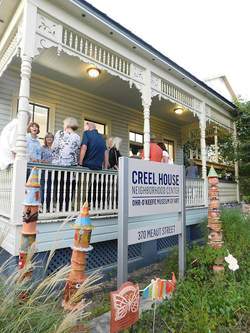
I think coast artists are a bit spoiled by such gung-ho receptions. Nobody sits alone in a gallery waiting to be noticed south of I-10. Up here, bumping on Tennessee, it’s often a different story.
I’ve spent the past year trying to start a shoestring gallery in Iuka, population 3,000. I’m making it up as I go along, and learning a lot about art and humanity. From my perspective, it would seem there are far more good but starving artists than patrons, at least in my particular neck of the woods. Almost every day, some eager artist without a place to show his or her work arrives with an excellent portfolio, often stored on a telephone. I don’t have the room or budget to accommodate all the deserving painters and photographers and potters who drop by. It is a shame, really, how much talent stays stacked up in remote studios instead of hanging on museum or gallery walls.
Just today I went with a friend to the library and had to turn on the exhibit room’s light to see some wonderful watercolors by a local artist. We were the only visitors.
I’ve puzzled much over the difference between communities that don’t just embrace but bear-hug the arts, compared to those towns that think a painting is a frill meant for rich folk. It is not. When I was a young girl, my mother bought the kind of art she could afford: two prints in cheap wooden frames of Asian street scenes. She didn’t pay money for the art, but swapped the Top Value stamps she collected at the Kwik-Chek grocery store in Pensacola, Fla. Now even at the Top Value redemption center there were more practical choices than art. Lamps, cookware, dishes. Mother, however, seemed hungry for something pretty to look at as she went about her housewifery day after day. She chose art. I can remember sitting on the floor beneath the two prints and making up stories to go along with the rather generic street scenes. In one, a beautiful woman was scurrying along, and I imagined where she might be headed. I never gave out of storylines, which sometimes overlapped with what I’d last seen on “Gunsmoke.” That’s what art does, in a way. It transports us to places we may never visit, inspires us to think about both foreign ports and home in a different light. It makes us yearn to be seaside, or in the mountains, or on top of a worn bedspread next to a yellow dog. It sometimes makes us laugh. John’s Cat Island is the South on my inner-compass, a destination hidden in my heart and head.
Arts Alive! Oct/Nov 2017
Creating portraits by embroidering can take up to a year to complete a single piece, but as she works, Ruth Miller is redefining tapestry - one thread at a time.
- story by LB Kovac, photos courtesy Ruth Miller
But they aren’t stately. By choosing domestic scenes and incorporating elements of African art, Miller is redefining tapestry, one thread at a time.
Ruth Miller herself is an unexpectedly quiet woman. On the phone, she has a sweet voice. She’s easy to talk to and laughs a lot. I imagine her smiling all the time. At home in her studio she says, when she’s working on a piece, she listens to audio books. “I need my mind to wander in two different directions when I’m working,” she says. “But it’s like driving—you get to a point where you don’t remember that you’re going somewhere, and then you’re there.”
But Miller didn’t learn embroidery there. She learned it where most girls of her era did: at home, from her female relatives, especially her mother and her aunt. “It was the end of those times where kids were universally taught sewing and embroidery.”
She recalls riding the subway to school and someone crocheting in a seat next to her. It would be an odd scene today, with ready-made textiles being so readily available, and so few people attempting such time-consuming art forms.
Miller says that she was inspired to think of embroidery as an art form by a Senegalese weaver. He produced tapestries that included abstracted and figurative art.
“I didn’t warm to paint at school, but I liked the cleanliness of textile art.” This weaver had a big impact on how she saw her own art. “He influenced my early attempts at style.” This is evident in pieces like “The Evocation and Capture of Aphrodite,” where a pattern that starts in background drapes before covering the back of the young girl’s shirt, or “Our Lady of Unassailable Well-being,” in which a smiling woman’s face is framed by a colorful pattern. For much of her life, Miller lived in the northern states, but she recently moved to Mississippi for two reasons: “I was looking for a place and time to make art,” and “I was looking forward to getting to know my family.” Miller’s mother was born in Meridian, and she herself had lived here once in the 1970s, before going back to New York. In a studio in an unincorporated area of Hancock County, Miller makes her art. The change of pace from fast, breath-taking New York to easy-going rural Mississippi no-doubt contributes to her art.
Miller’s works do have one major thing in common with Romanesque tapestries: time. Art historians estimate that the Bayeux Tapestry took ten years to produce.
Miller’s pieces don’t take quite that long, but she does profess that the average piece takes 9 months to produce, and she spends as long as a year and a half on the larger ones. That’s with a schedule of sewing about five hours a day, five days a week. “If I thought about how long it would take, I probably wouldn’t do it,” she says. “It’s like doing a puzzle; you don’t think about how long it will take you. You just think about the thrill of the search.” It’s a much longer “search” than the average artist in other art forms—painting, drawing or writing. Because every tapestry takes such a long time to make, subjects take on a focused air. The artist was committed, for quite a length of time, to capturing a moment. In the Bayeux Tapestry, it’s the Battle of Hastings, a moment important to the Norman Conquest of England. It’s the moment when the English monarchy, still intact today, began. It’s easy for us to see why the artist wanted to share that moment with generations to come. What makes Miller’s works all-the-more interesting are her subjects. She doesn’t embroider battles or knights or princesses. She focuses on people. People combing hair, people talking on the phone, people glancing at something outside of frame. Miller says, “I thought about my own interior life… I’m addressing it for myself, and it happens universally.”
She finds inspiration in a young girl capturing a photo, a woman drinking tea, a laugh, a smile. These simple gestures take on a grand importance, a gravity even, that just isn’t tangible in a painting or a sketch. The works feel much more intentional, much more purposeful, if only because we realize how much time the artist spent making them.
Miller’s thread art has a pulse. Skin tones take on a feathery quality, making the subjects feel alive. In pieces like “The Impossible Dream is the Gateway to Self-Love,” where Miller has to carefully choose where each color goes, you can be surprised what colors jump out. She works from a palette that numbers in the thousands of hues. It makes them feel alive. In amongst the chocolates and charcoals and beiges, there might be a stray blue thread. They have a soul. The constraints of embroidery mean that Miller will never be as prolific as Picasso, but that doesn’t matter to her. Her art is simply a way of sharing her views with the world. “I want people to see that art is a way to life itself… Whatever grabs you about a singer, they’re making their heart visible to you.” Ruth Miller’s works hang in private collections and museums across the United States. You can find one of her pieces, "The Path to Enlightenment" on display at the Smith & Lens Gallery through October 22, 2017.
Talk of the Town - October 2017
A new kind of festival in December promises to light up the night at the Hancock County Fairgrounds.
- story by Lisa Monti
According to the producers, the Lights Fests have been described by participants as nothing short of magical that create “a surreal ambiance and memories of a lifetime.” Tour dates this year include Denver, Chicago, Toronto, Atlanta, Winnipeg, Phoenix/Tucson and Atlanta. Our local event is the last of the year.
Kevin Ladner, Hancock County’s recreation director, said the local site was selection for a couple of reasons. “They picked the fairground because we had a wide open space - about 80 acres - and we could handle the crowd they’re expecting, 5,000 to 8,000 people.” Location was another reason, he said. “They are going to target New Orleans and Mobile, and we’re within an hour or so” of both cities. Ladner said the wind direction on the day of the event will dictate where the lanterns will be lit and released safely.
“It can’t be too windy to carry the lanterns on someone else’s property,” Lander said. “We want to keep the lanterns on Hancock County’s property.”
Tickets sold online start at $35 and move up to $55 as the date of the event nears. Kids 3 or younger get in free; ages 4 to 12 pay $8. For the price of admission and a signed waiver, you’ll get a sky lantern, a flashlight, keychain and marker to personalize your lantern. Brings chairs or a blanket and find a place near one of the Tiki torches used to set the lanterns ablaze. Around twilight, the live entertainment and kid friendly activities begin. Depending on wind conditions and when local fire officials give the word, you’ll get instructions on how to prepare and launch your lanterns. Organizers say they have “made safety the cornerstone of our business practice.” Alcohol isn’t permitted and neither or pets. For more information, or to volunteer or be a vendor, go to the Lights Fest website.
Beach to Bayou - Oct/Nov 2017
A light-hearted series of races along the Bay St. Louis coastline has built a monster following over the past three years.
- story by Ellis Anderson, photos courtesy Wendy Kennedy
Visiting for the race? Check out the Shoofly Magazine's guides to Bay-Waveland!
Duathlons are races that start off with a two-mile run, followed by 11 miles of biking and finishing with a two-mile run. Participants can also choose to enter a simple four-mile run.
Graham says that the series is now three years old, although it’s the fourth year for the HH. Most of the races now sell out – meaning they reach the maximum number of participants who can register, around 300. “About 70 percent of our participants now are repeaters,” says Graham. “More than 50 percent come from either Alabama or Louisiana, but we get lots from Jackson and Hattiesburg too.” Graham has her masters in Exercise Science whose business, Hurricane Multisport, offer race day planning and hosting services. However, the QuadBurner Event Series is a volunteer project. Graham guesses the race series is growing in popularity because the focus is more on staying in shape and having fun than being seriously competitive. The races offer some prizes (several for costumes in the Halloween Hustle), but forego the traditional age-group categories. “It’s less about who wins the race and more about getting people moving,” she says. “These races are designed to give people something to keep training for year-round, to encourage a lifetime of fitness and good health.” The unique approach and the support of several corporate sponsors – including FEB Distributing and Run & Tri - allows Quadburners to spend more money on the race participants “swag” (freebies, like visors, warm-up jackets, etc.) and the after-race celebration that feature a DJ, beer and food from the popular coast caterer Savory Roots. The remaining funds are donated to the non-profit Hancock County Canine Operation unit of the Sheriff's Department. Last year, Quadburners gave more than $4,000 to the unit, which enabled the department to purchase a new specially trained dog. They're on track to double that amount in 2017. Officer Jeremy Skinner spearheaded the effort to form the not-for-profit and many officers volunteer their time for the events.
Quadburners races follow the same course each time, beginning and ending at the Washington Street pier pavilion in Bay St. Louis. Veteran runners are learning to appreciate both the town and the course, making for a relaxing experience all the way around.
Graham notes that local spectators are always welcome and encouraged. She says that several residents who live near the course now pay attention to when races are scheduled. On race mornings, they bring lawn chairs down to the beach to watch the fun (registration starts at 7am, the race starts at 8am). “And it’s great fun,” Graham says. “I’m always impressed with the costumes with the Halloween Hustle. We had some folks dressed as champagne bottles once. I’m still not sure how they rode bikes in those costumes.” Link to register and info for QuadBurners Event Series:
The term "coaching" has expanded outside the realm of athletics into an applied science that can help people lose the stress and gain the goals.
- by Tina Richardson
Timothy Gallwey, author of the Inner Game of Tennis said “There is always an inner game being played In your mind no matter what outer game you are playing. How aware you are of this game can make the difference between success and failure in the outer game”
In the 1970s, Timothy Gallwey taught tennis lessons by telling students what they were doing correctly and incorrectly. He eventually learned that teaching by "dos and don'ts" created a high level of stress that negatively impacted performance. His solution was to approach teaching by looking at it from the student's perspective. Gallwey developed a method of teaching using non-judgmental thinking and having the students focus on three things: imagining what they wanted to do, trusting themselves, and concentrating. The method worked so well that subsequent books on Inner Games - mostly related to sports - were published. For a number of years Gallwey has been applying his method of teaching to corporations and individuals. He feels that the key is not to teach, but to help the student learn and to facilitate that process. This process is called "coaching" because it gives the client the tools and support to have fresh perspectives on all areas of their life, instead of telling them what or what not to do. The YouTube video below presents an excellent explanation of how coaching enhances decision-making skills, improves interpersonal effectiveness and increases confidence.
Life coaches are trained and accredited. They are members of organizations like the International Coach Federation. Laurie Johnson lives here in Bay Saint Louis, Mississippi. She is a life and business coach who is certified as an Associate Certified Coach with the International Coach Federation and a member of the Gulf Coast ICF Chapter. “After Katrina I was feeling like I had lost my passion for almost everything I was doing," Laurie said, explaining why she was drawn to professional coaching. “I felt stuck. One day at the library I found an audiobook by a coach named Cheryl Richardson called Finding Your Passion. I listened to it and was intrigued by the idea of hiring a coach." Laurie followed through with professional coaching and soon found herself moving forward and "waking up" to things that were truly important to her. Laurie then decided to become a coach herself to help her nonprofit clients and women entrepreneurs. Through her business, 4 Elements Coaching, Laurie also coaches people who are transitioning to new careers, entering a leadership/managerial role, or just trying to discover what they want to do in retirement. Some of her clients are looking for help with the “stuff” that everyday life brings - like caregiving, relationship challenges, or work/life balance. Laurie is also a program advisor for a coach training school called InviteCHANGE and one of the creators of the Women's Entrepreneurs program with the Gulf Coast Chamber of Commerce. 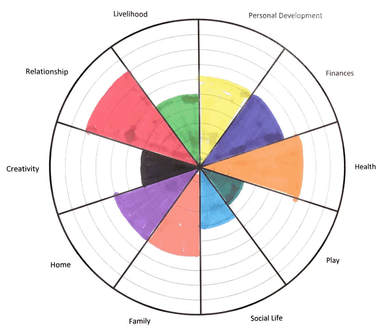 Sample of how a self-assessment might look on a wheel of balance. Sample of how a self-assessment might look on a wheel of balance.
The coaching process usually starts out with an assessment of your life as it is now. On a scale of 1 to 10 - with 10 the highest rating - you'll rate your experience in the life areas shown in the graphic. Just that simple assessment can show you what needs more attention.
A coach can help you achieve that balance by helping you find your goals and then focus on them. You'll explore your direction in life, establish clear short-term goals, and learn to use tools like time-management, prioritization and affirmations to manage stress, debt, and self-confidence. In short, coaching can assist people in transforming dreams into reality. “The client does the work of discovering and integrating," Laurie said. "Active listening, thoughtful questioning, and reflecting are the three key areas in which I spend most of my coaching time.” If you're interested in exploring life coaching, you'll find FAQ's on the website of the International Coach Federation. Many coaches offer free introductory sessions, as does Laurie Johnson of 4Elements Coaching.
Coast Cuisine - Oct/Nov 2017
One of Bay St. Louis's most popular restaurants has changed hands, and while the menu and décor have been subtly updated, the goal of pleasing people has not.
- story by Lisa Monti, photos by Ellis Anderson
Not much has changed under the new ownership and that’s just fine with the regular customers who remain loyal to their favorites at 200 North Beach, including Miss Ann’s homemade pecan pie and the always in- demand Angus ground chuck Bay Burger served on a brioche bun.
The look of the menu, however, has been refreshed, according to acting GM Vicky Bailey, and some new items have been added, including the deliciously rich-sounding double-cut New Zealand lamb chops ($29), which is something you don’t see often on local menus. Another is beef Wellington ($27), marinated boneless short rib wrapped in delicate pastry, found on a list of local favorites that includes Ahi tuna, meatballs and spaghetti to fresh grilled catch of the idea.
The building itself dates back to 1903, making it one of the oldest on Hancock County’s waterfront. Over the years, the structure has gone through many iterations and owners. Most recently New Orleans developers Jim and Catherine MacPhaille and Chef Becton took over from Miss Ann Tidwell, well known for her gracious hospitality and for bringing the building back in 2011 after Katrina’s destruction.
For our recent lunch, a cup of hearty seafood gumbo led things off, followed by a satisfying slice of quiche speckled with salmon. There’s a Monday-through-Friday all-day local special and on this particular day, a Friday, it was blackened tilapia with seasonal vegetables ($12), all tasty and well seasoned.
The Catch of the Day (grilled triple tail topped with ginger glaze over a bed of rice for $21) is another reason to come back for lunch. 200 North Beach has built a reputation as a go-to spot for locals and a destination for visitors to enjoy a casual lunch, an end-of-the-day cocktail or a special dinner. There’s also an upstairs dining room and balcony for private parties. Special events at 200 North Beach include Happy Hour from 4 to 6 p.m. Monday through Friday featuring specially priced oysters and house cocktails. |
Categories
All
Archives
July 2024
|
Shoofly Magazine Partners
Our Shoofly Partners are local businesses and organizations who share our mission to enrich community life in Bay St. Louis, Waveland, Diamondhead and Pass Christian. These are limited in number to maximize visibility. Email us now to become a Shoofly Partner!

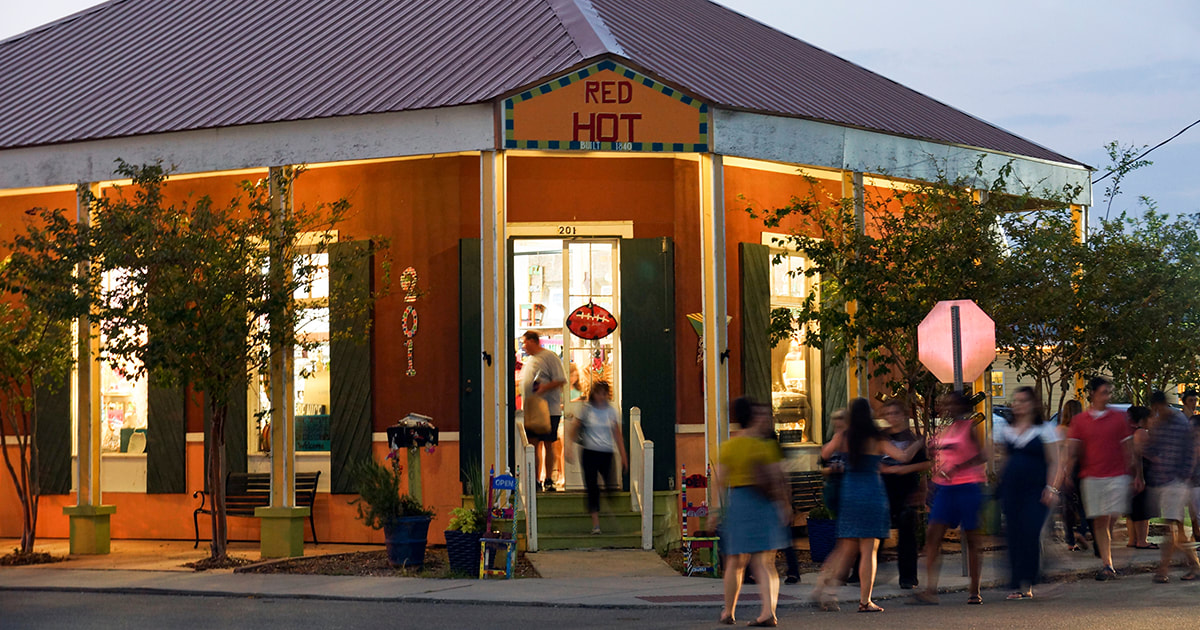
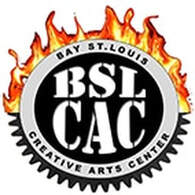
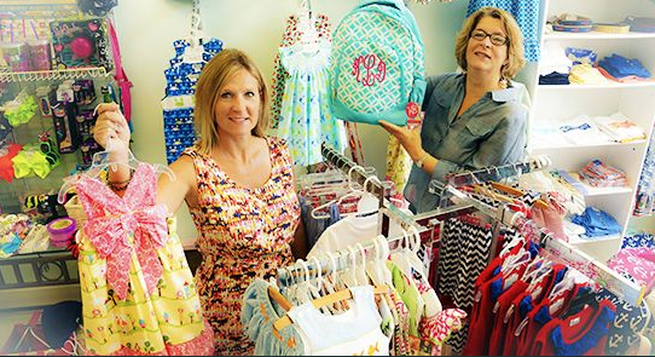
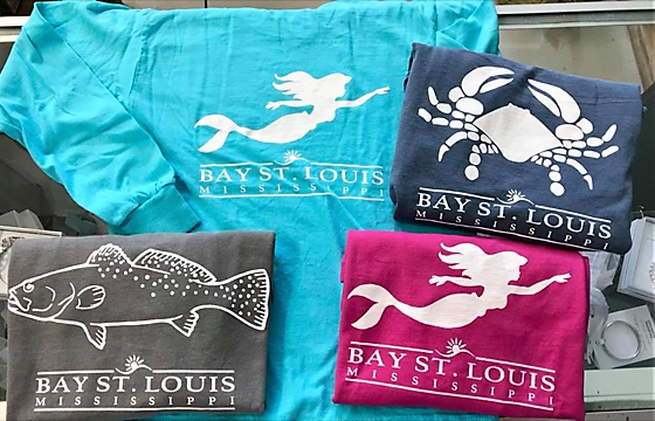

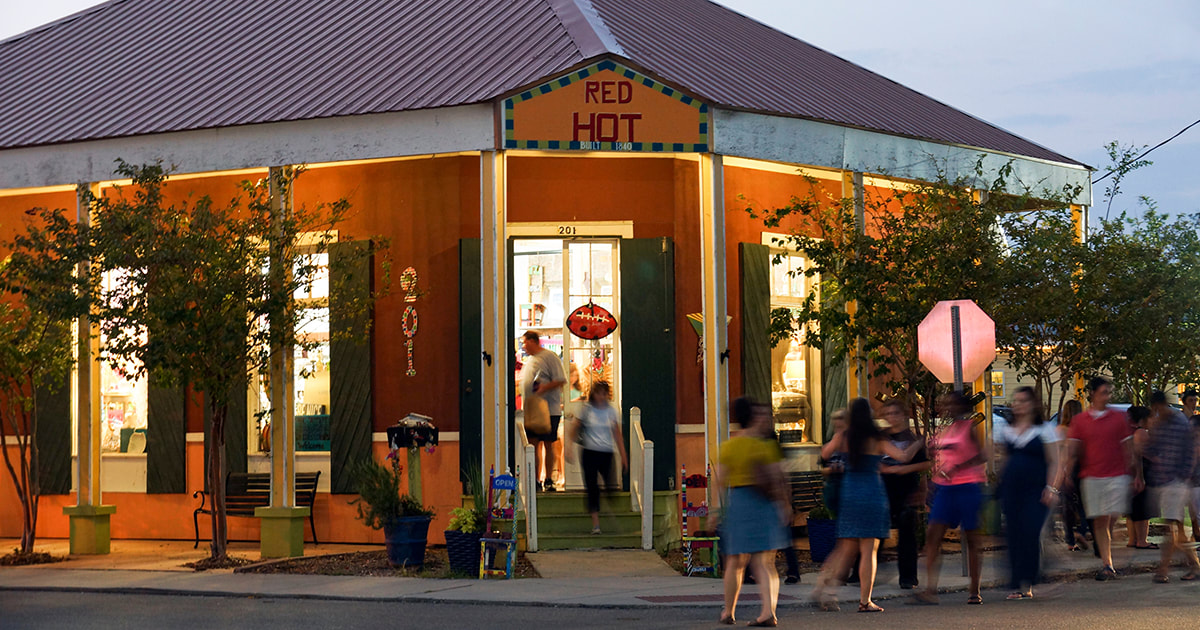

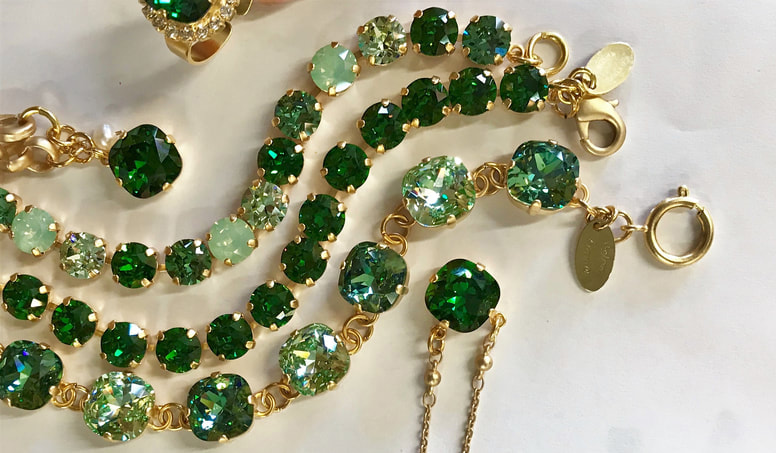
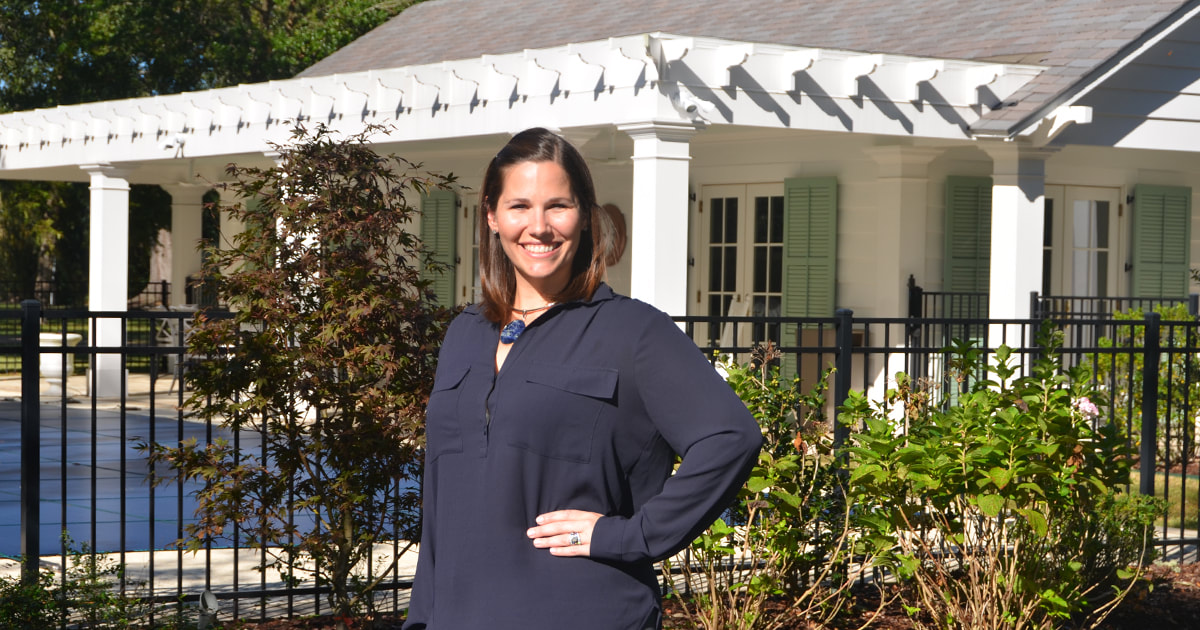
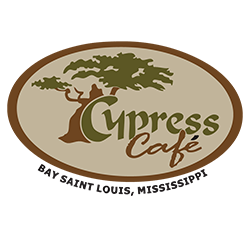
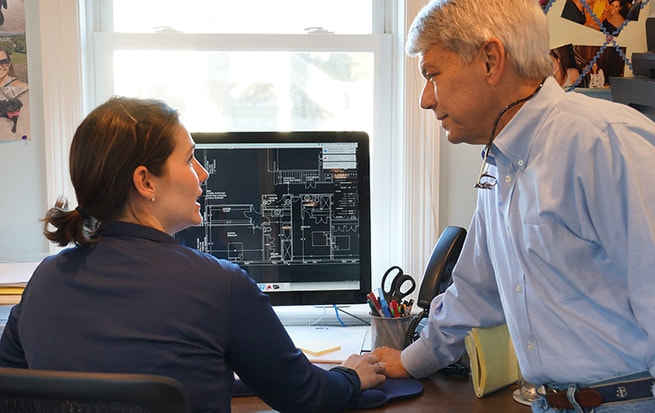
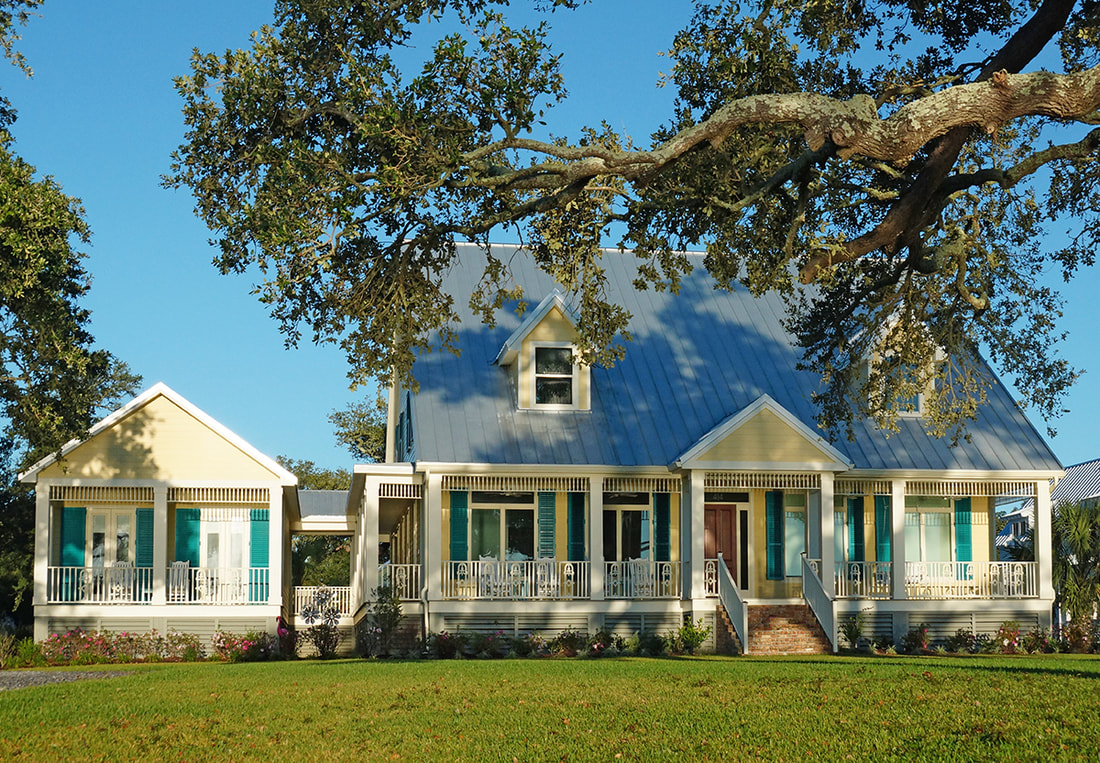
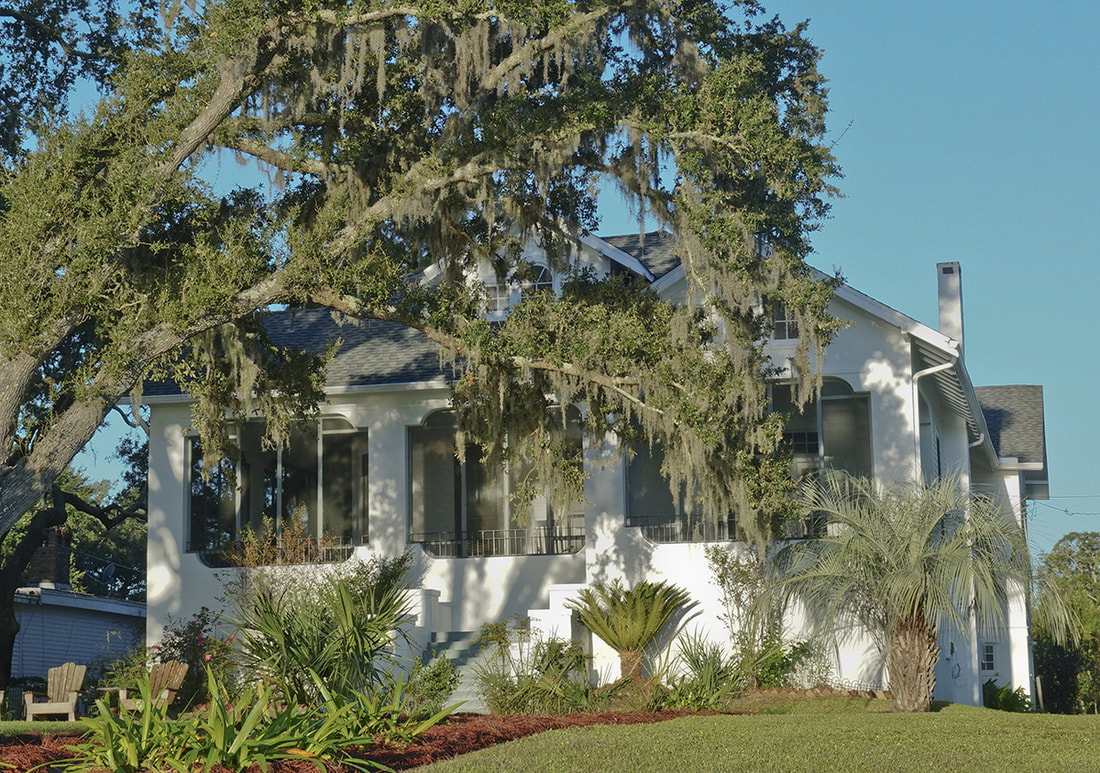

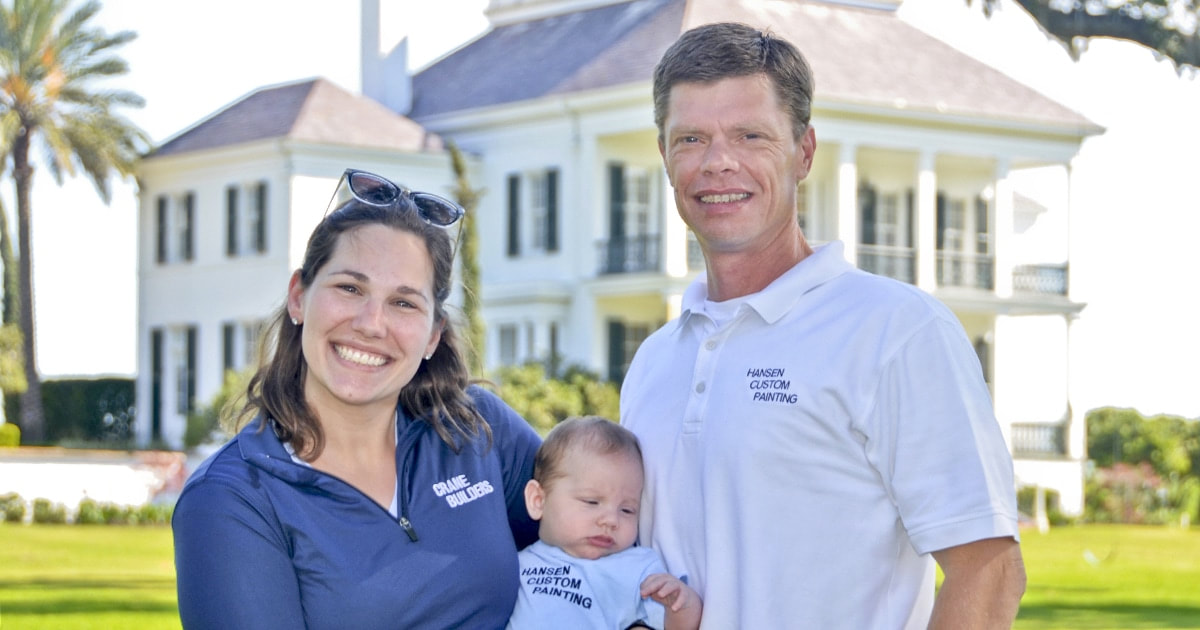
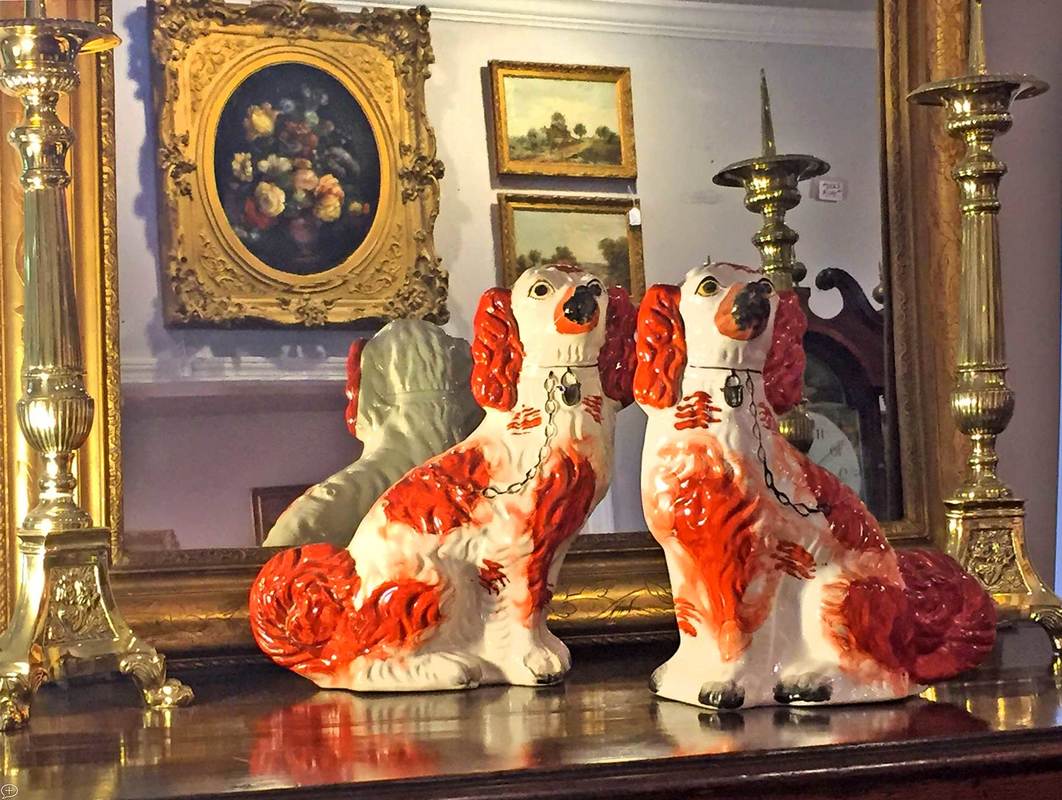

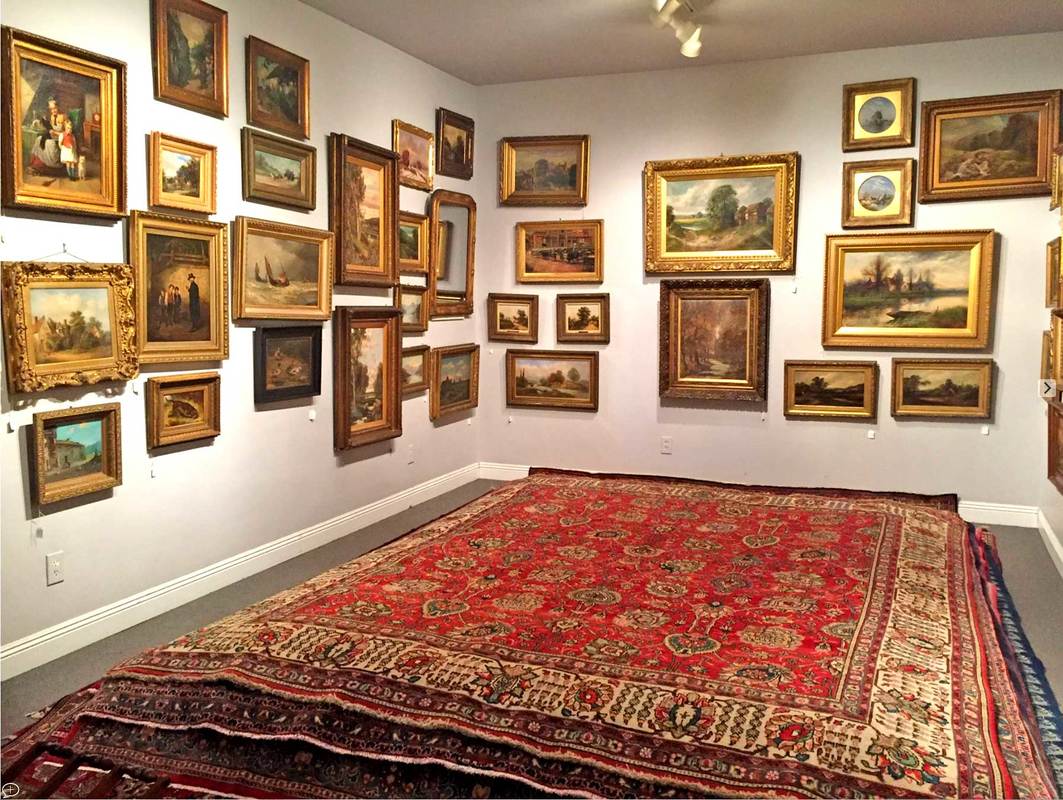
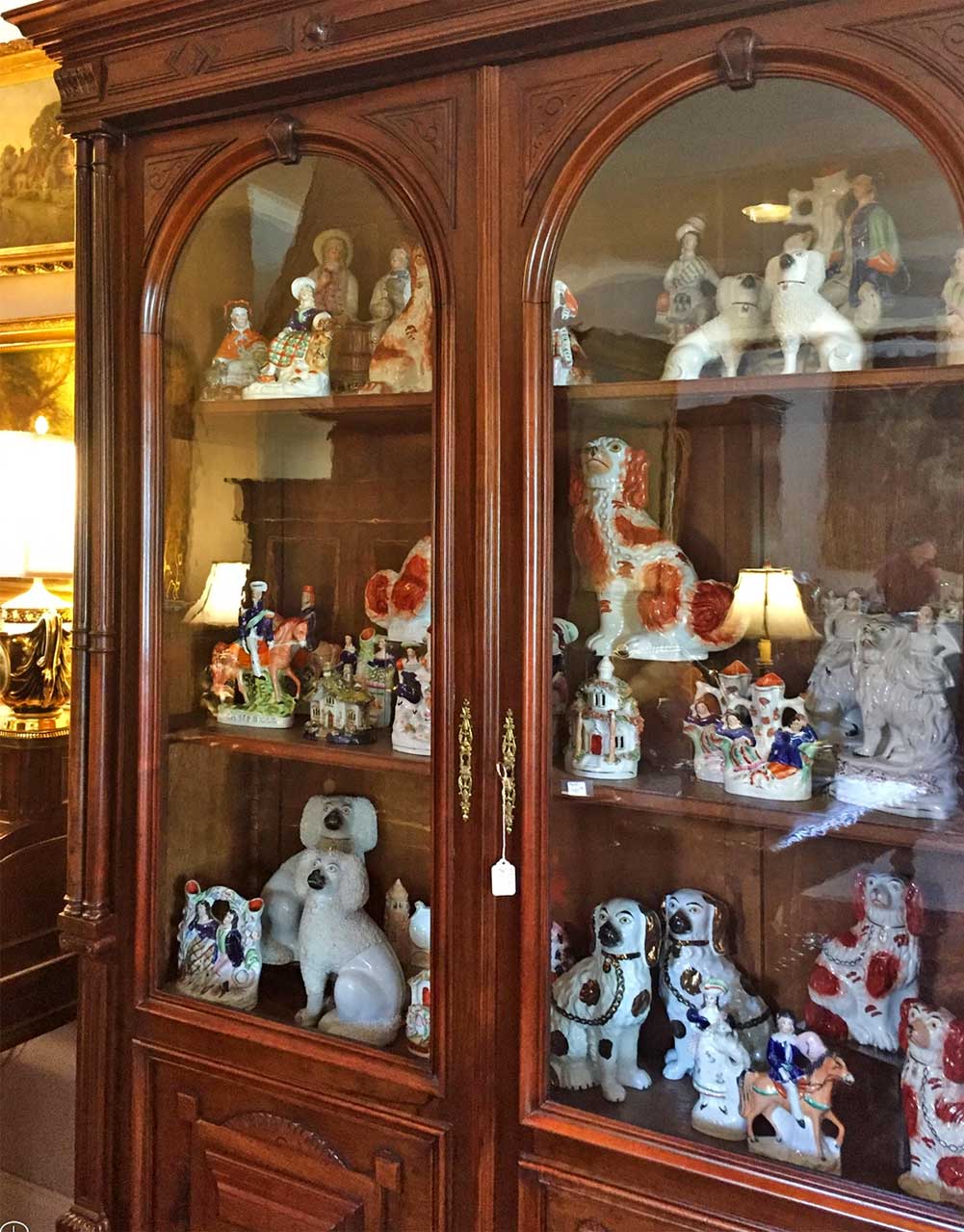
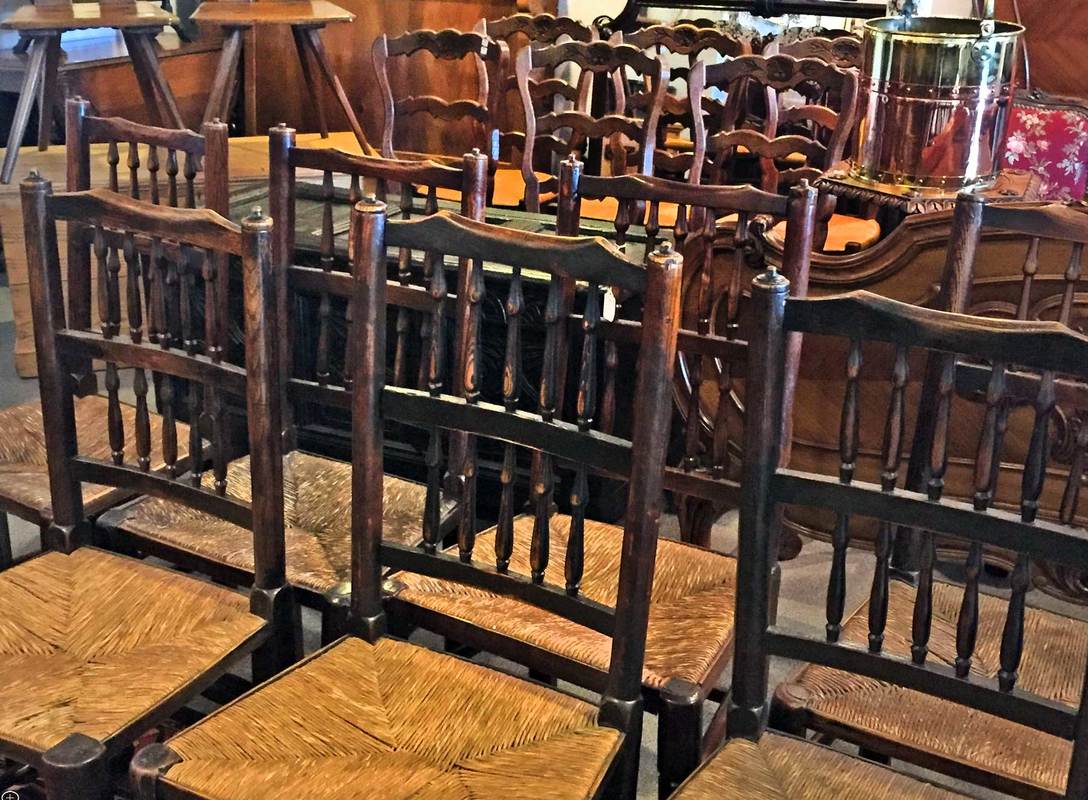
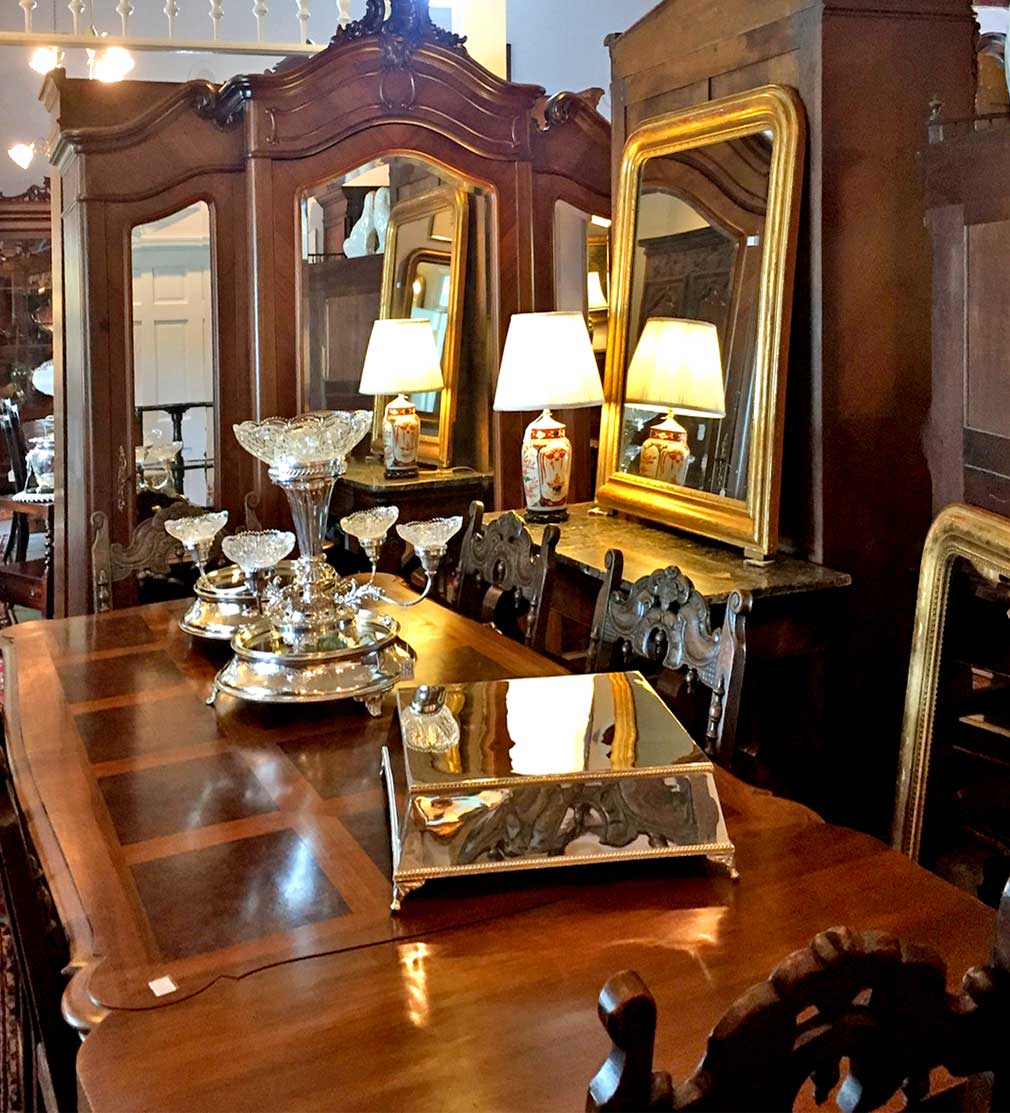
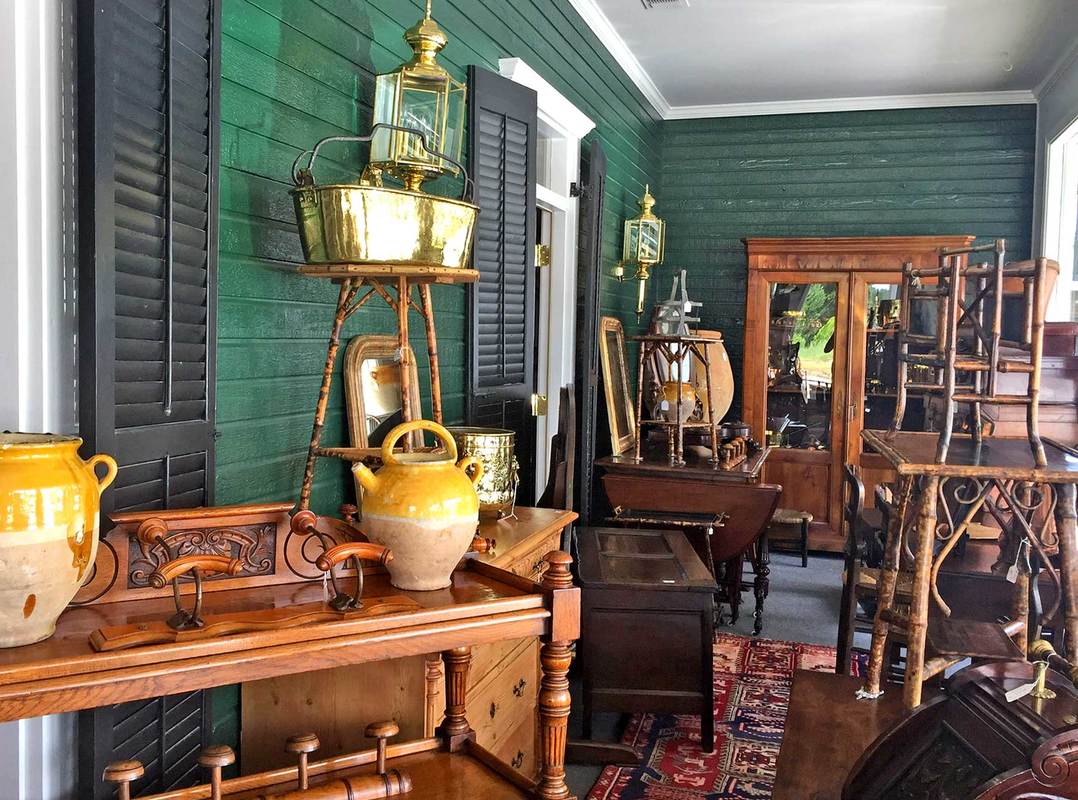
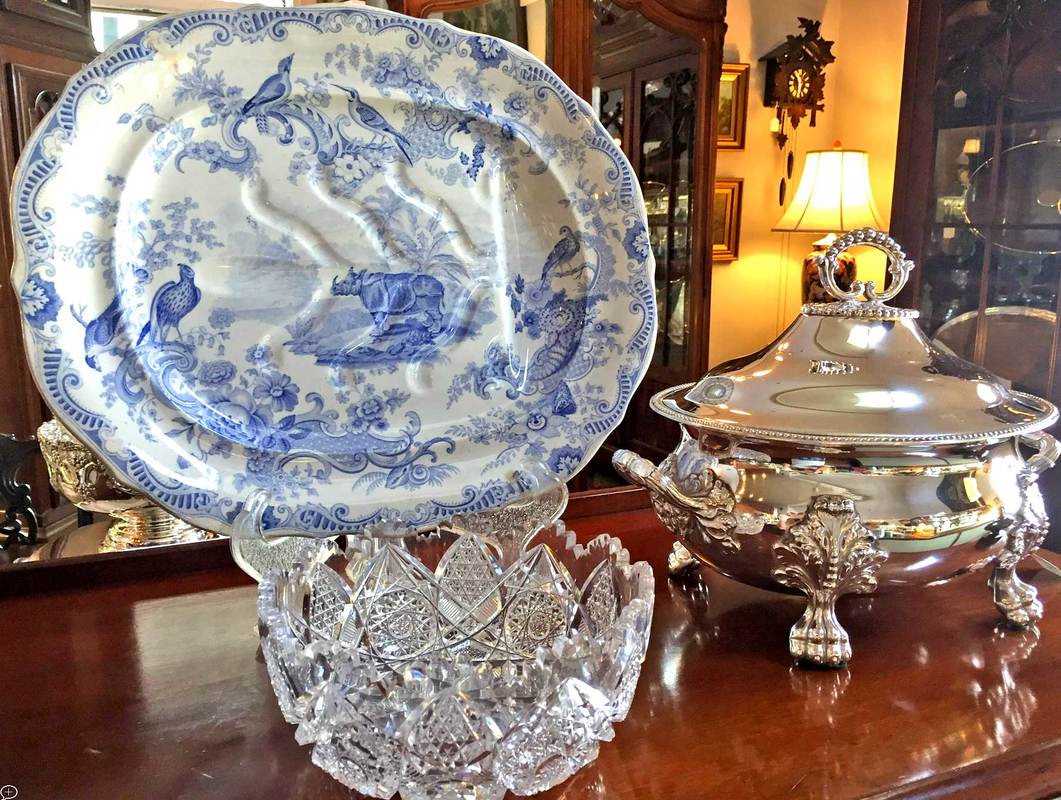
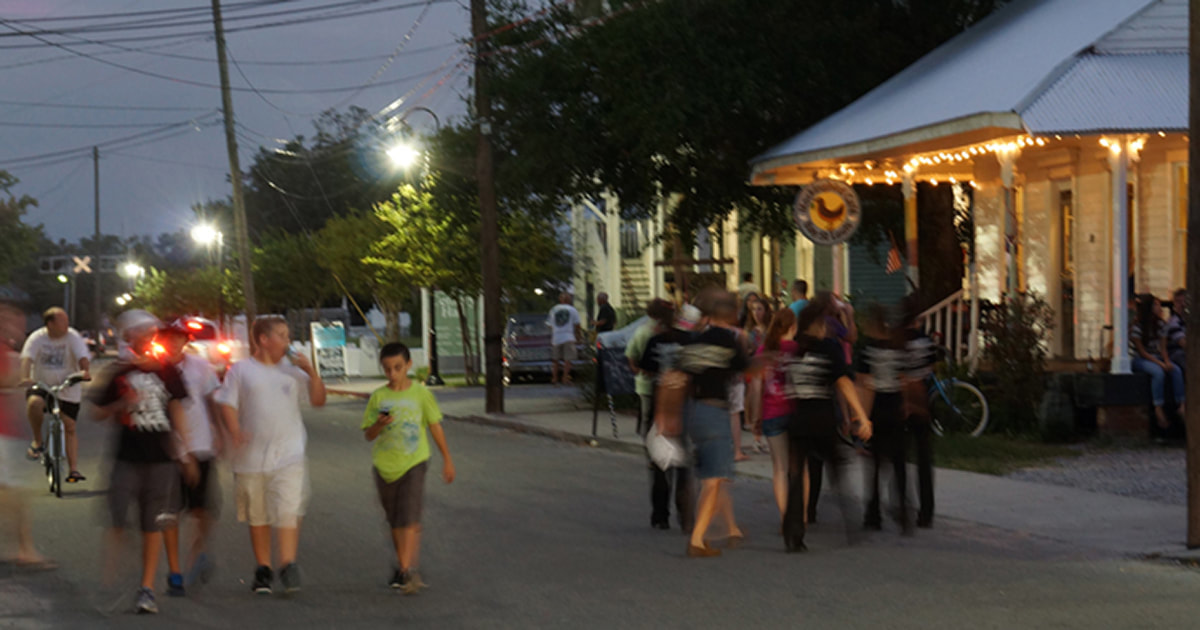
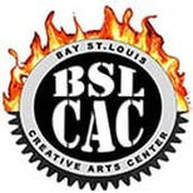
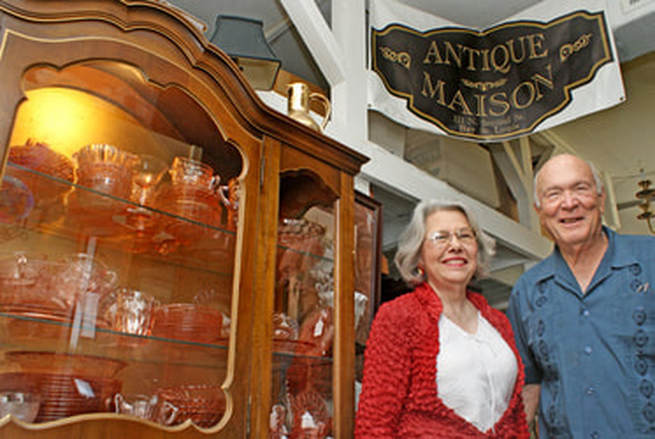
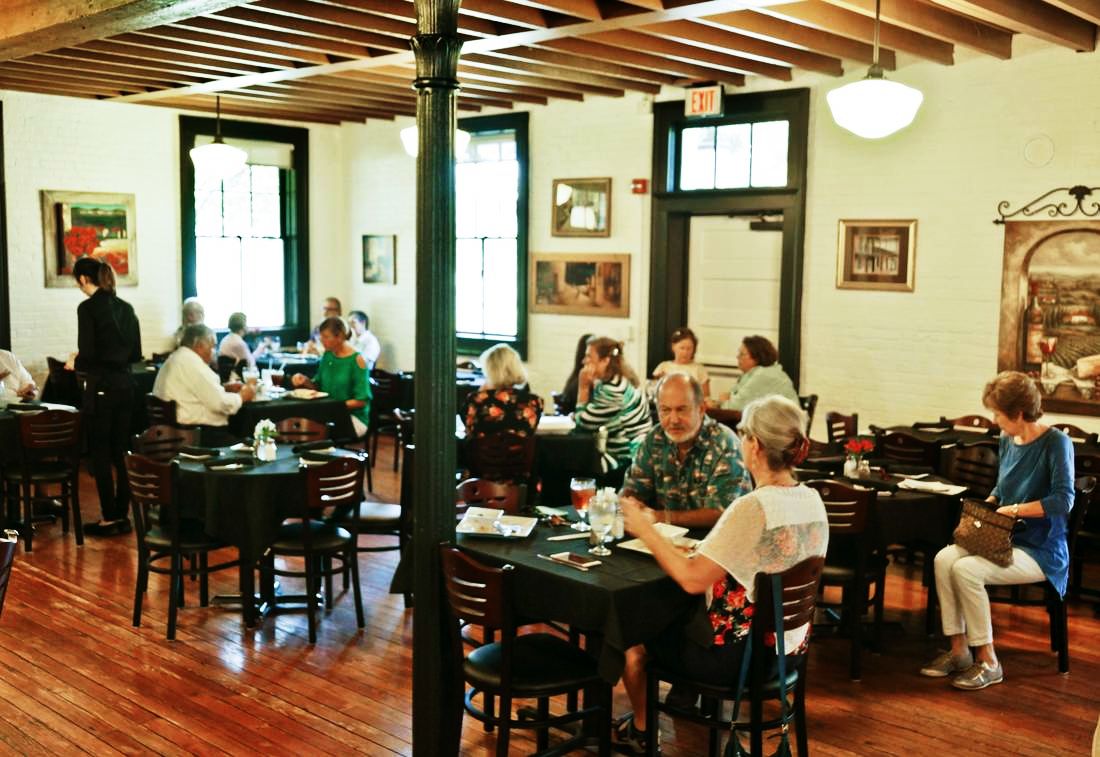
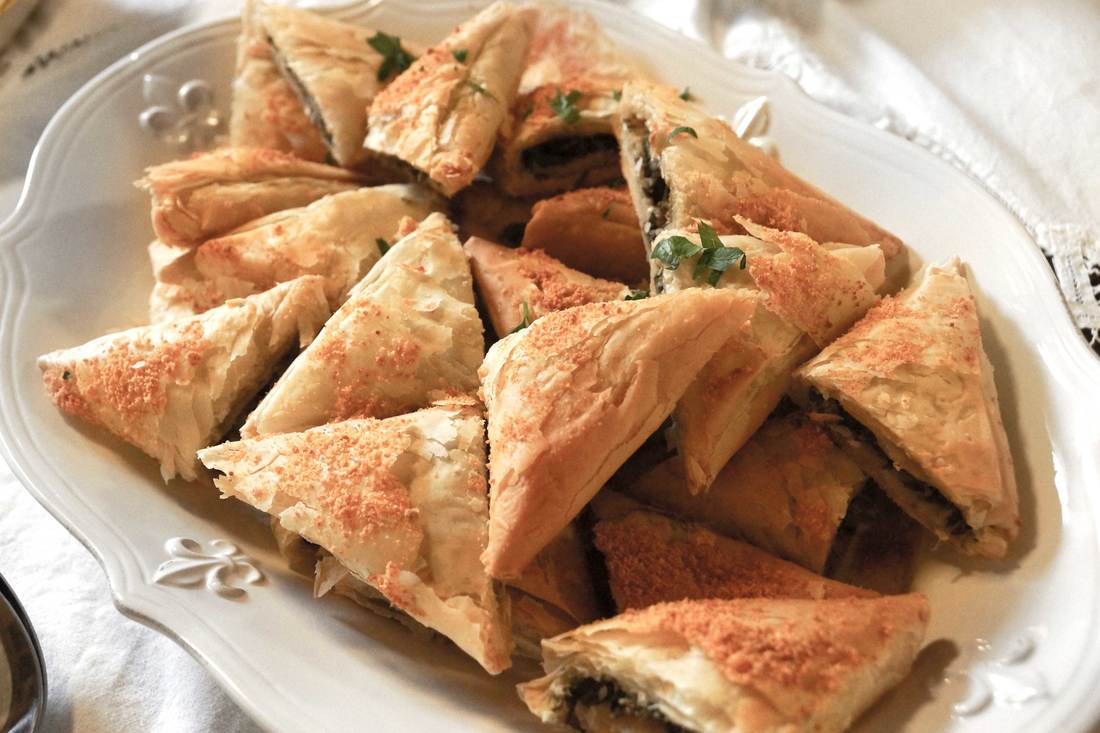

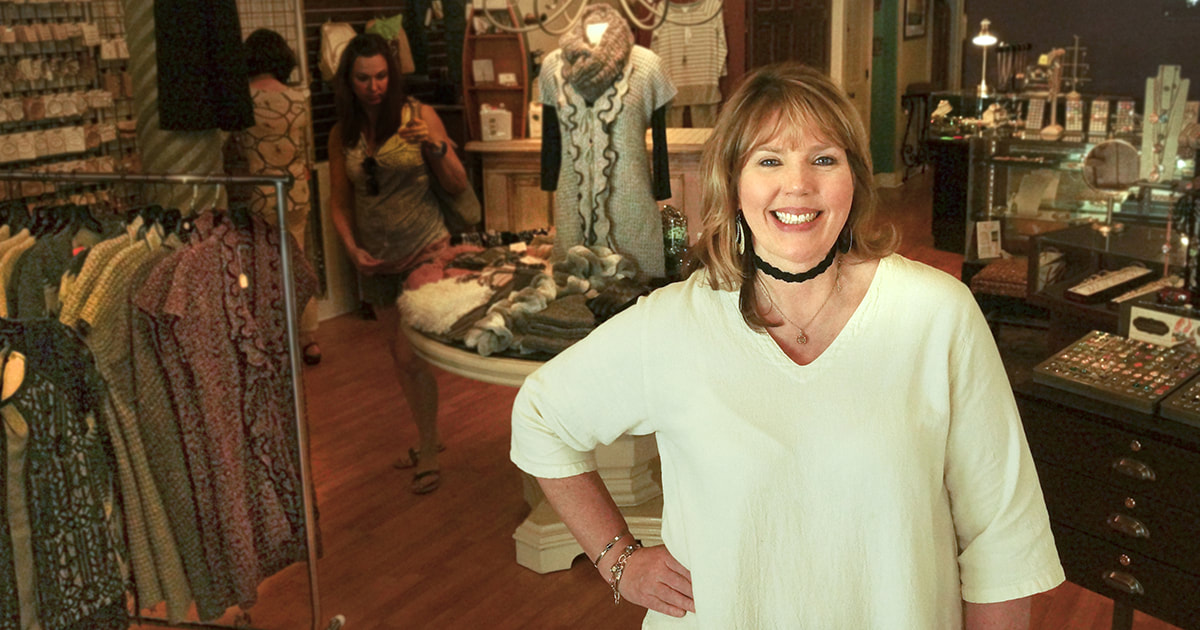
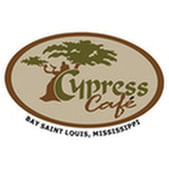

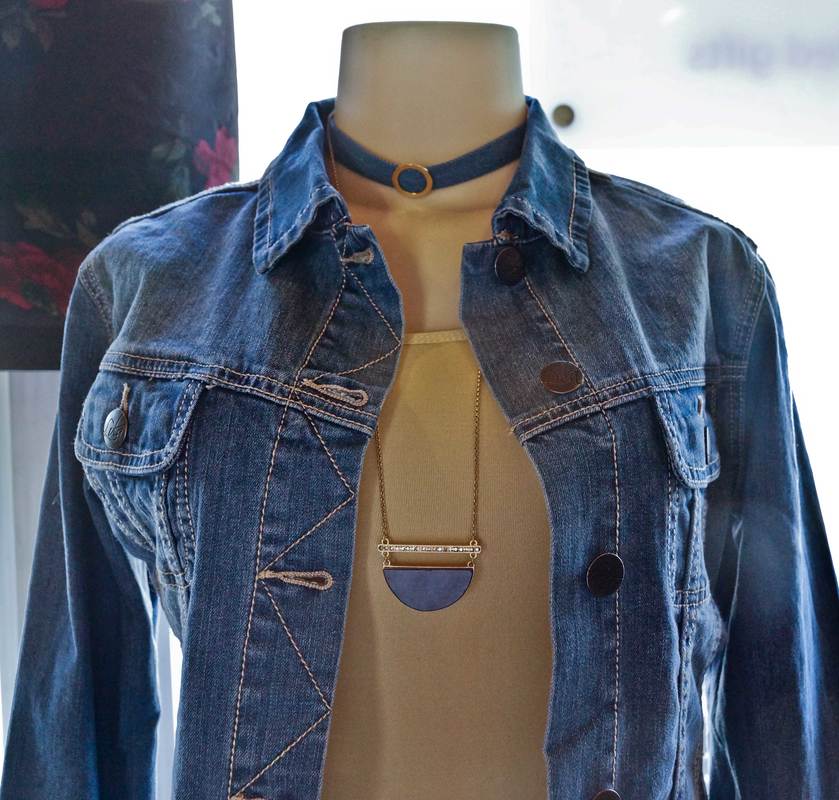


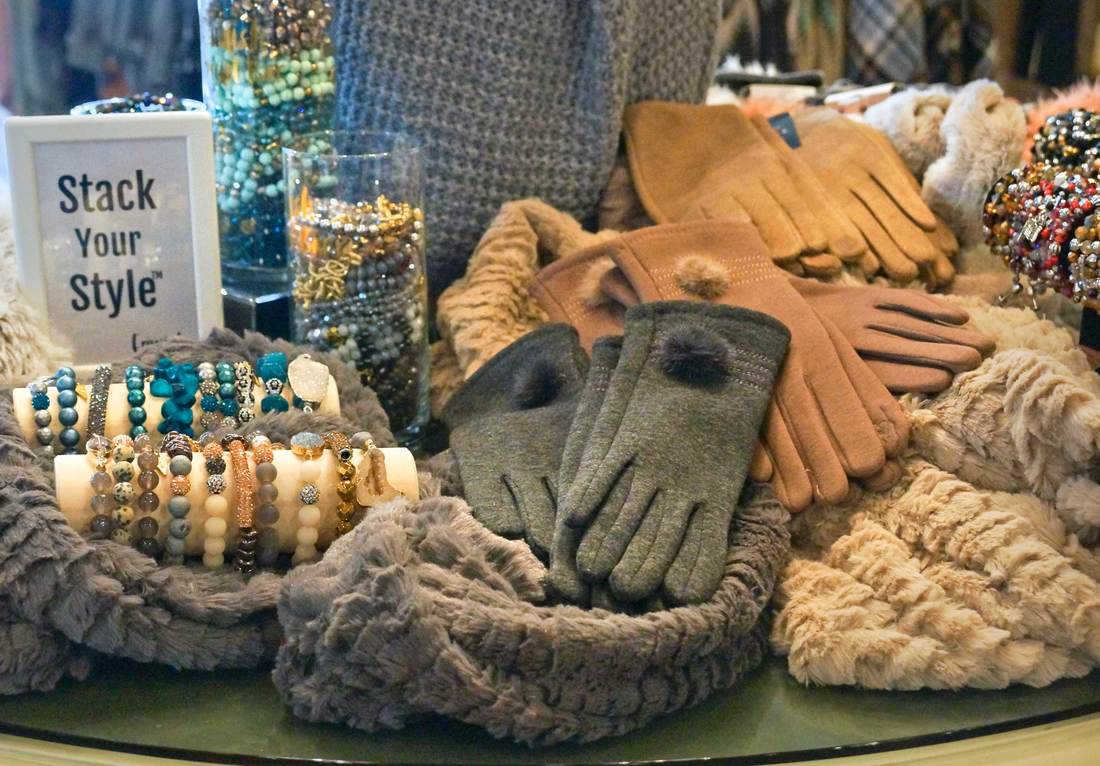
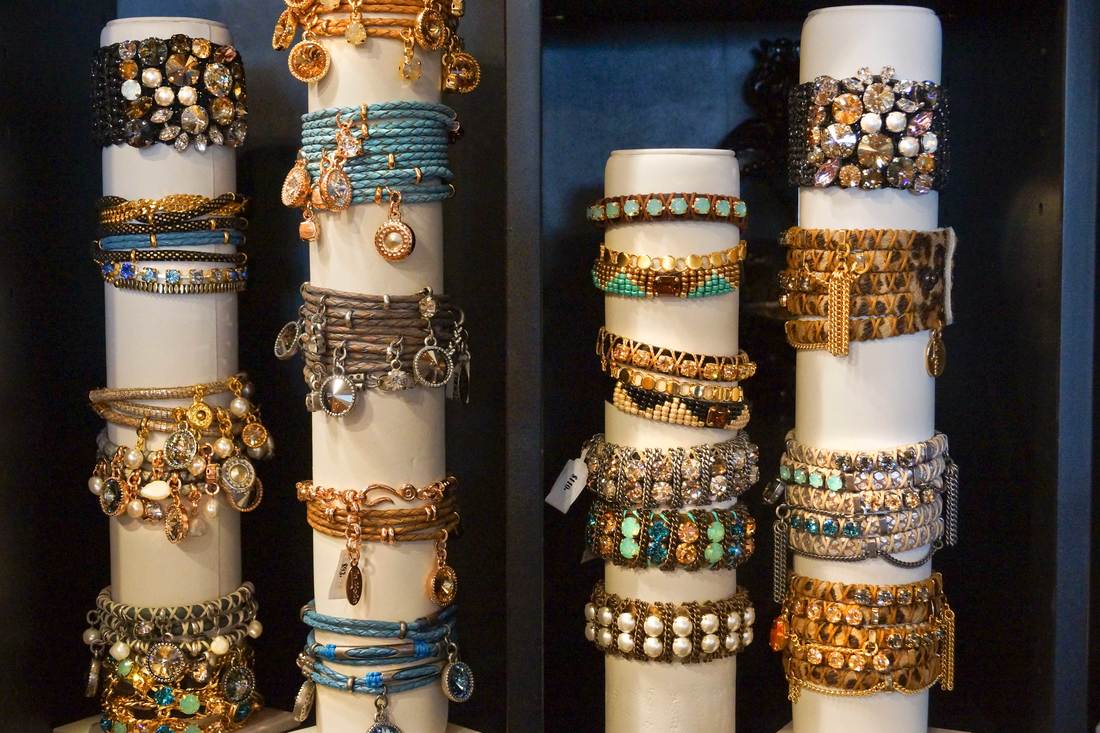




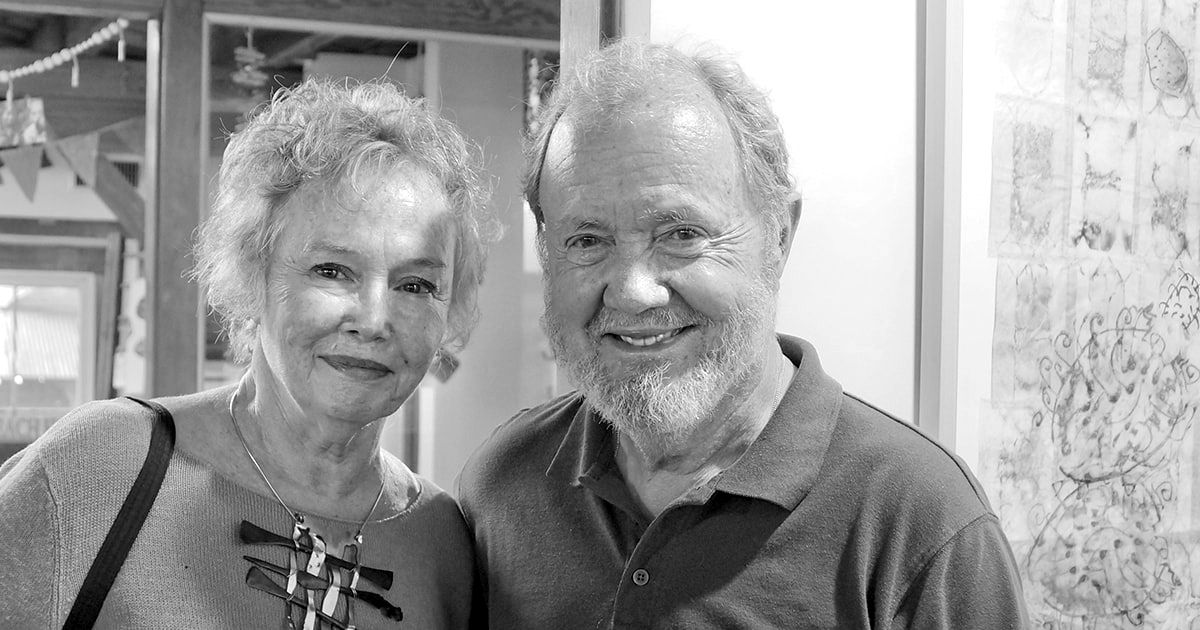

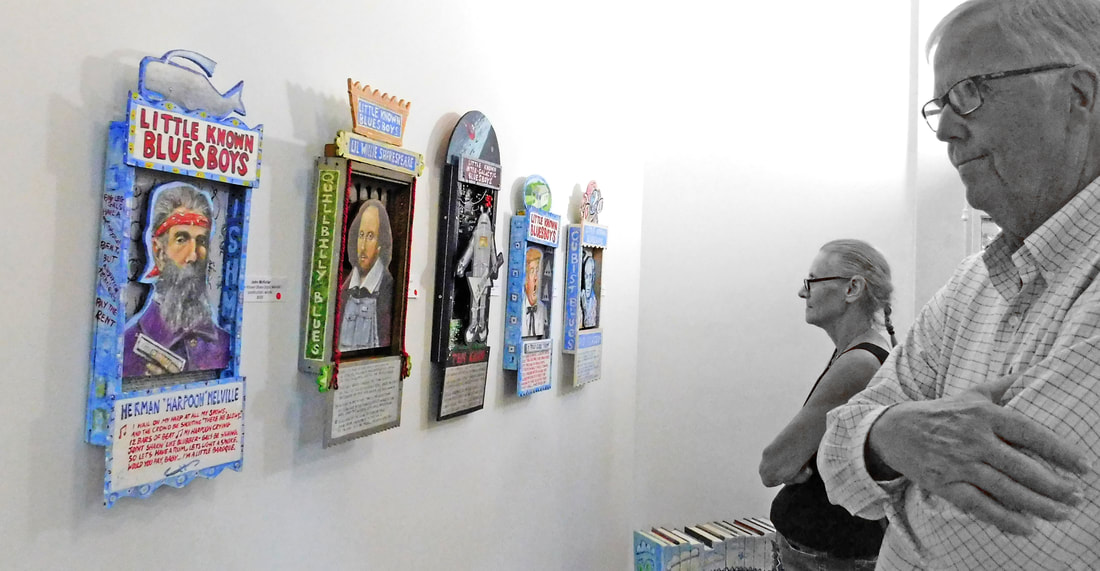
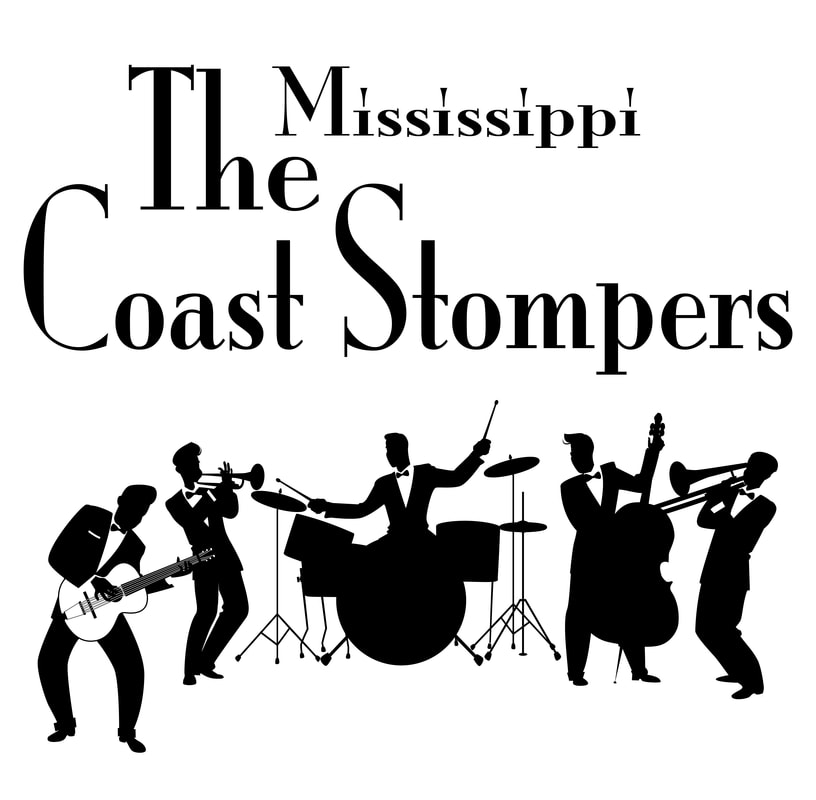
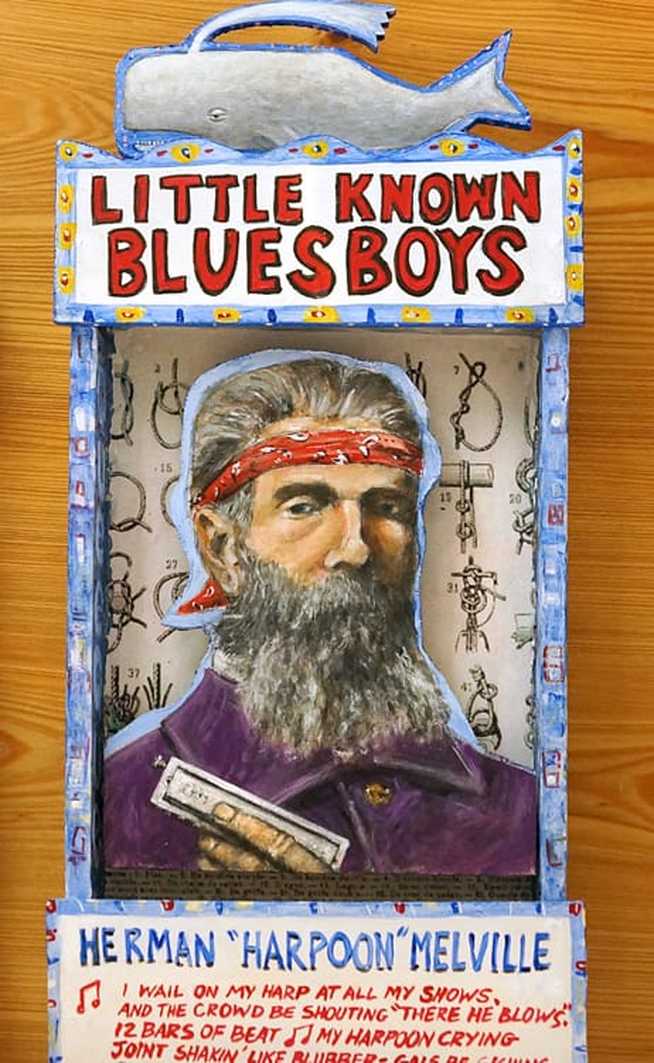
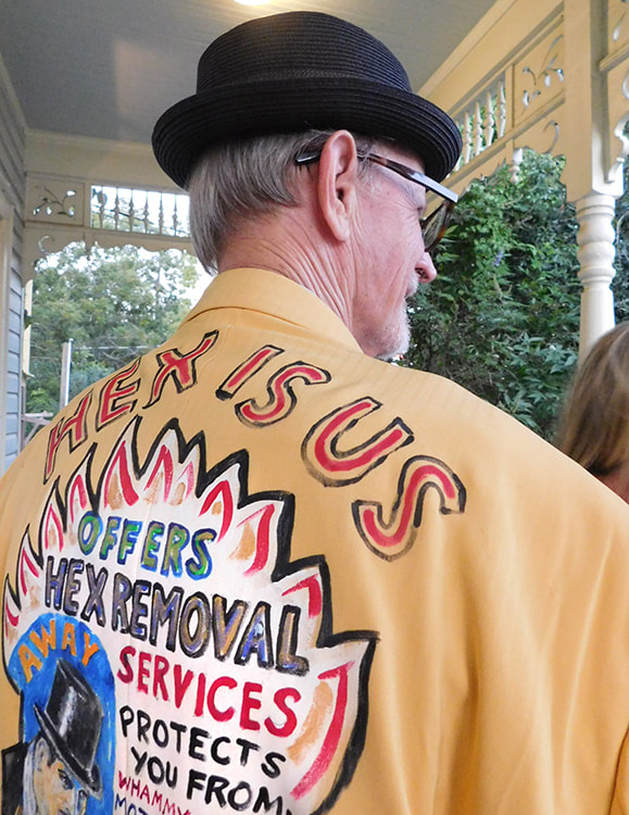
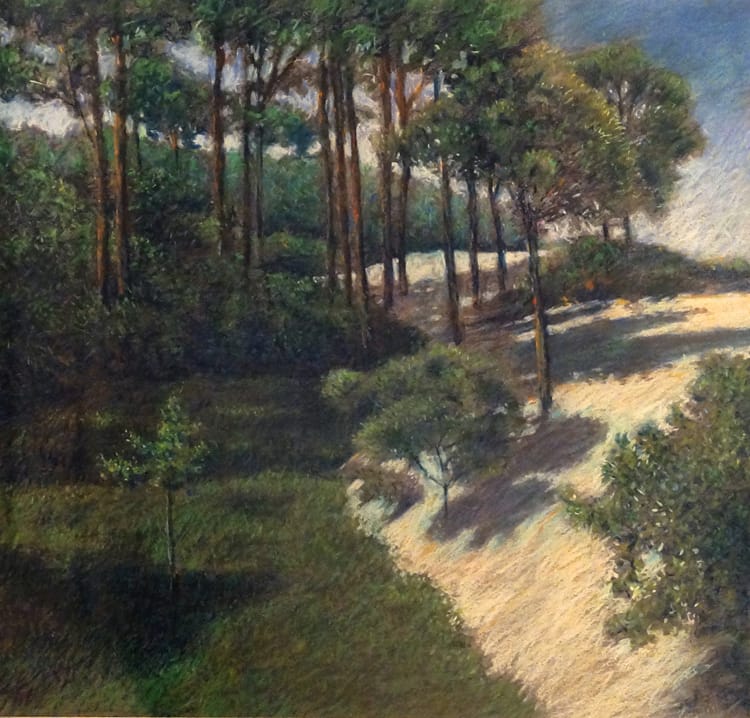
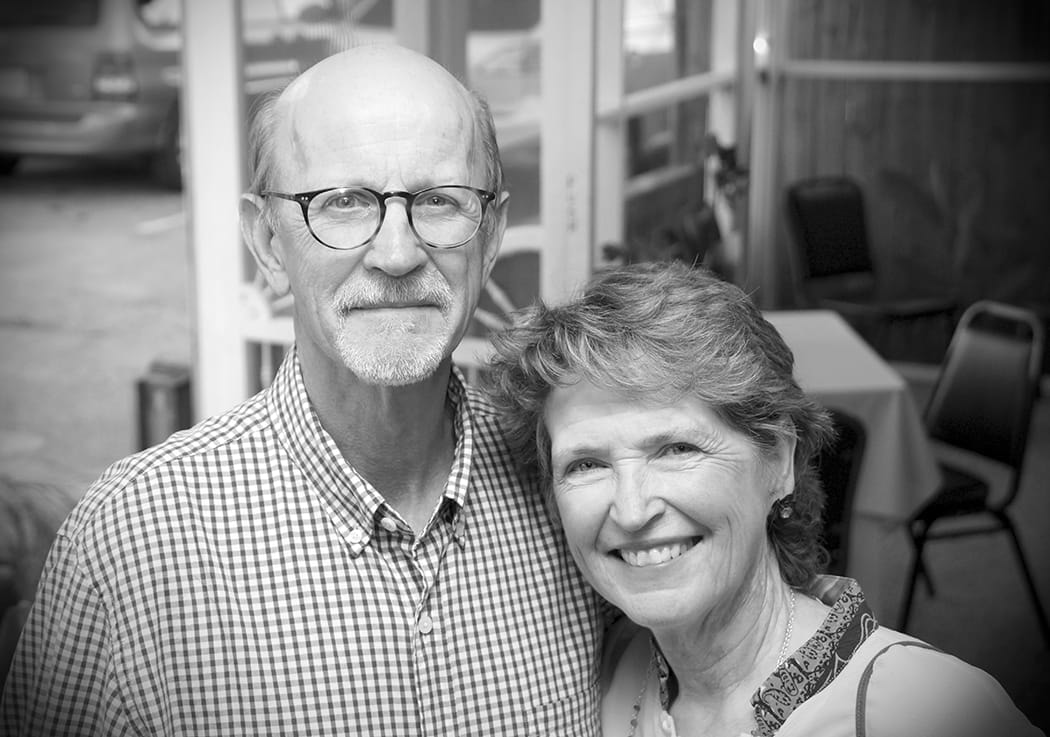
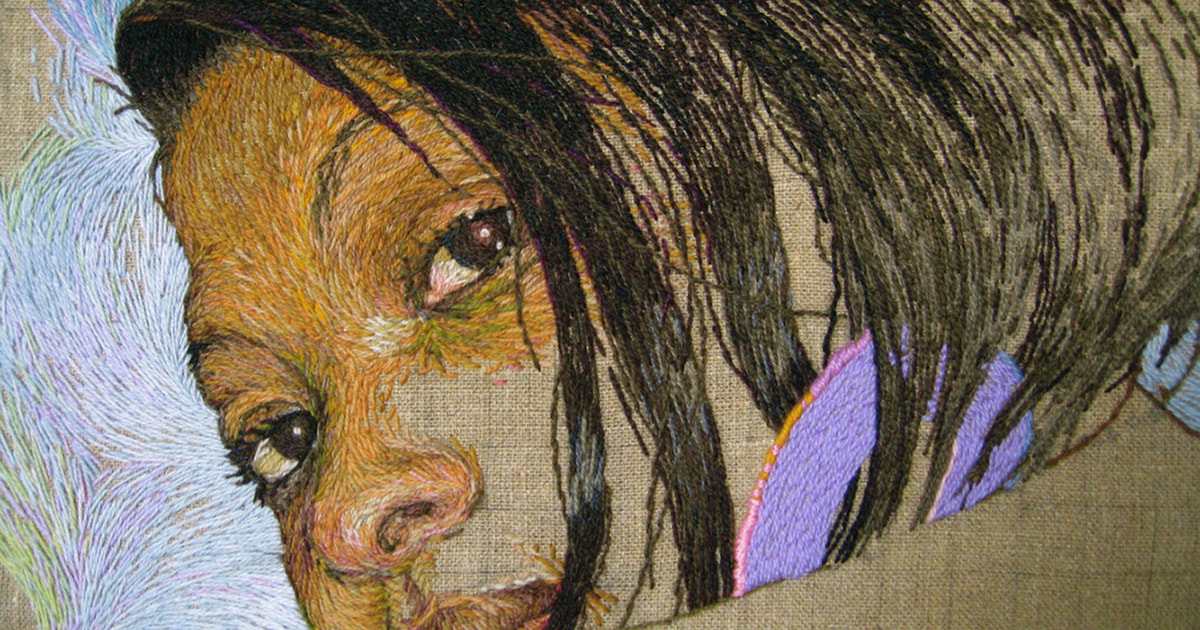

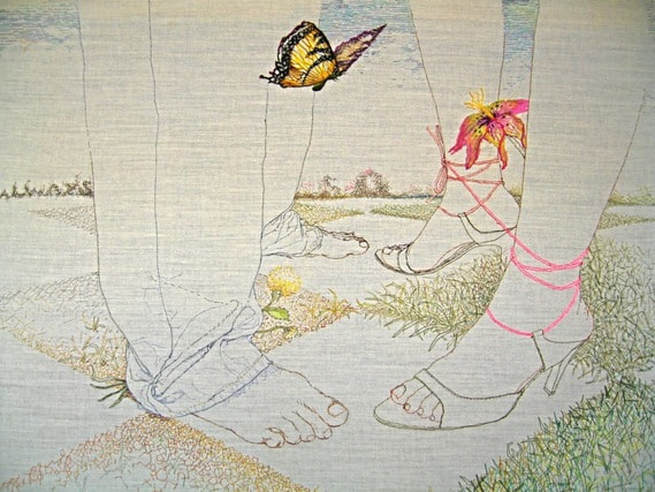
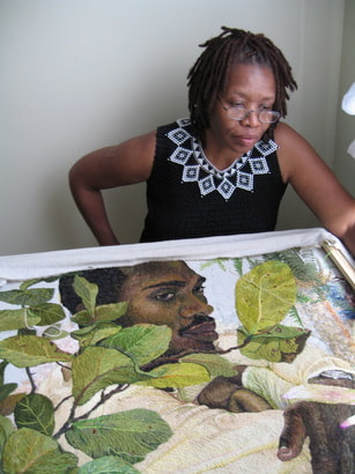
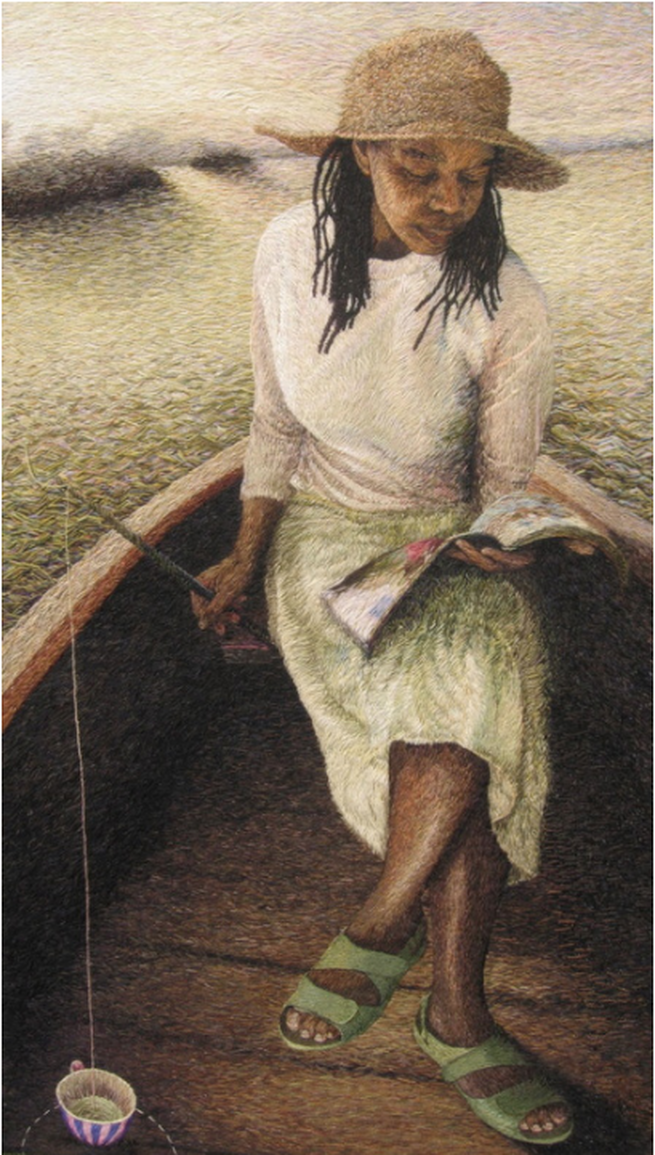
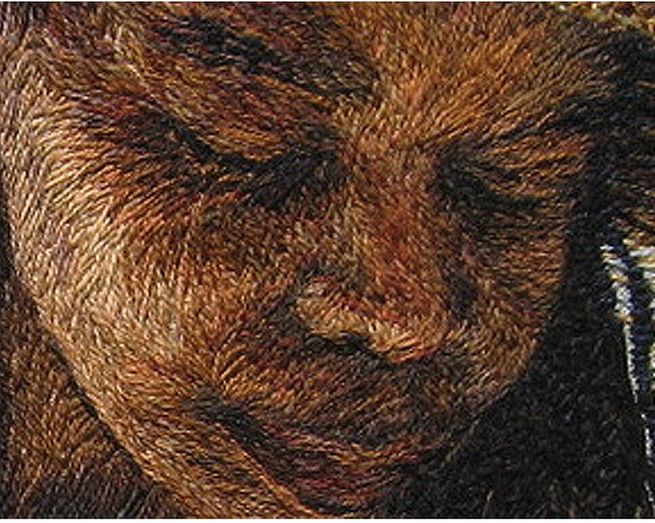
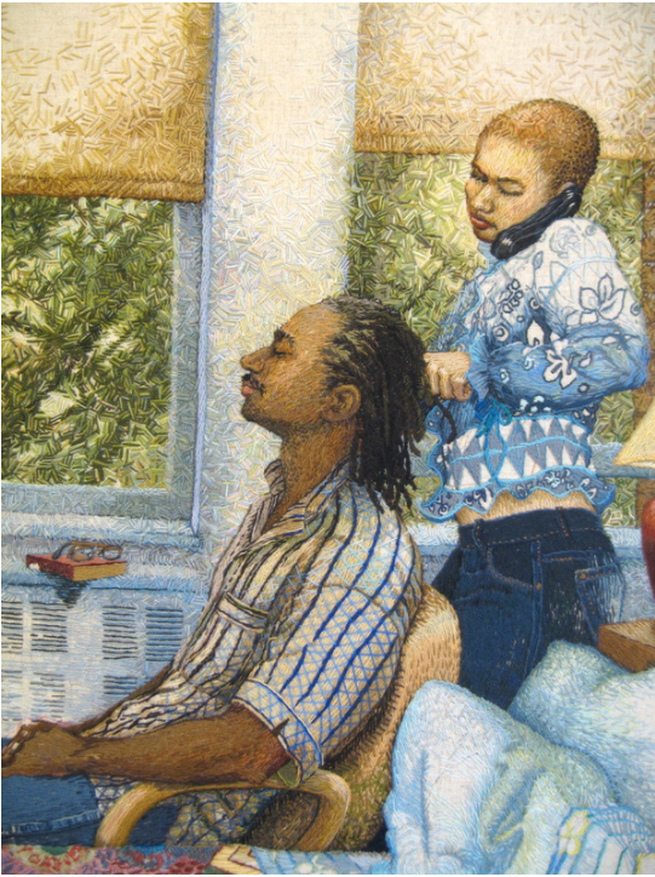
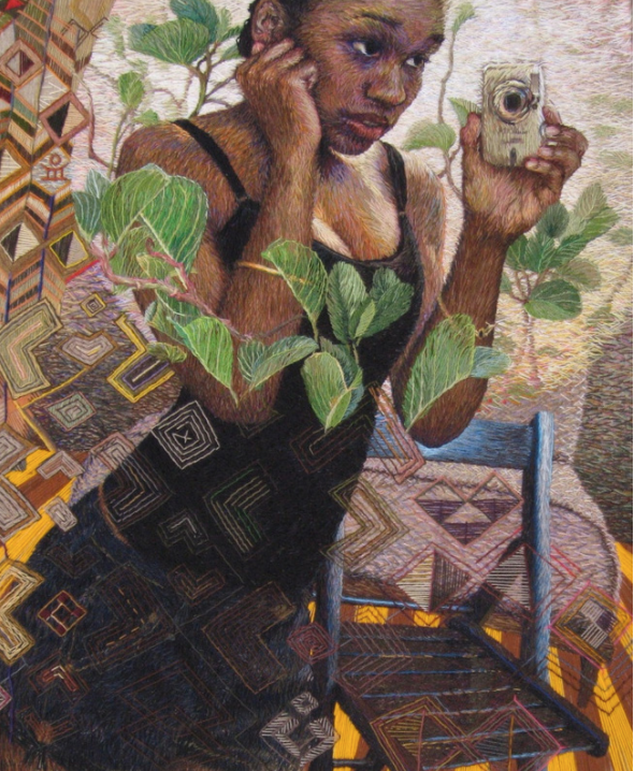
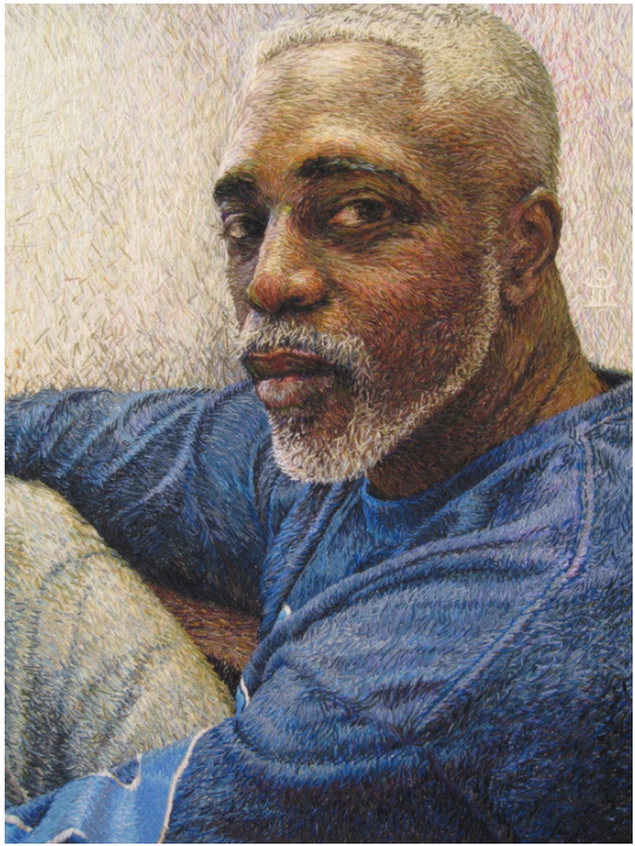
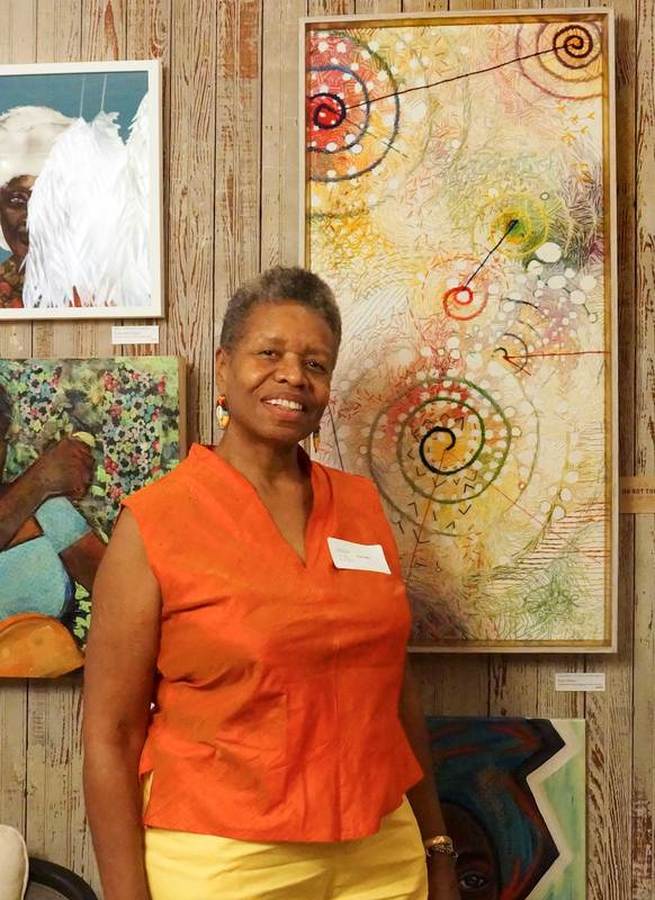
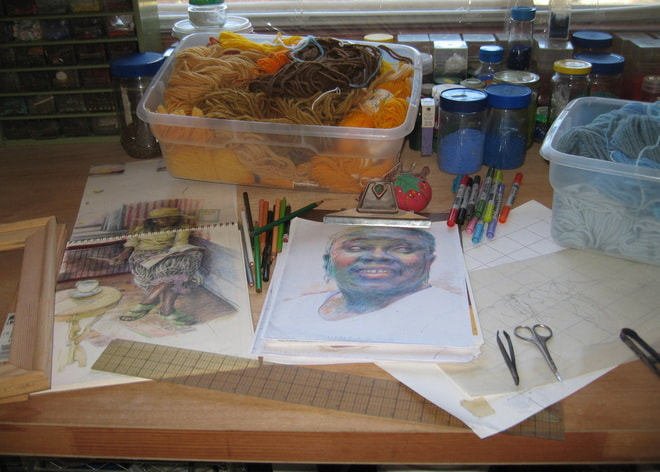




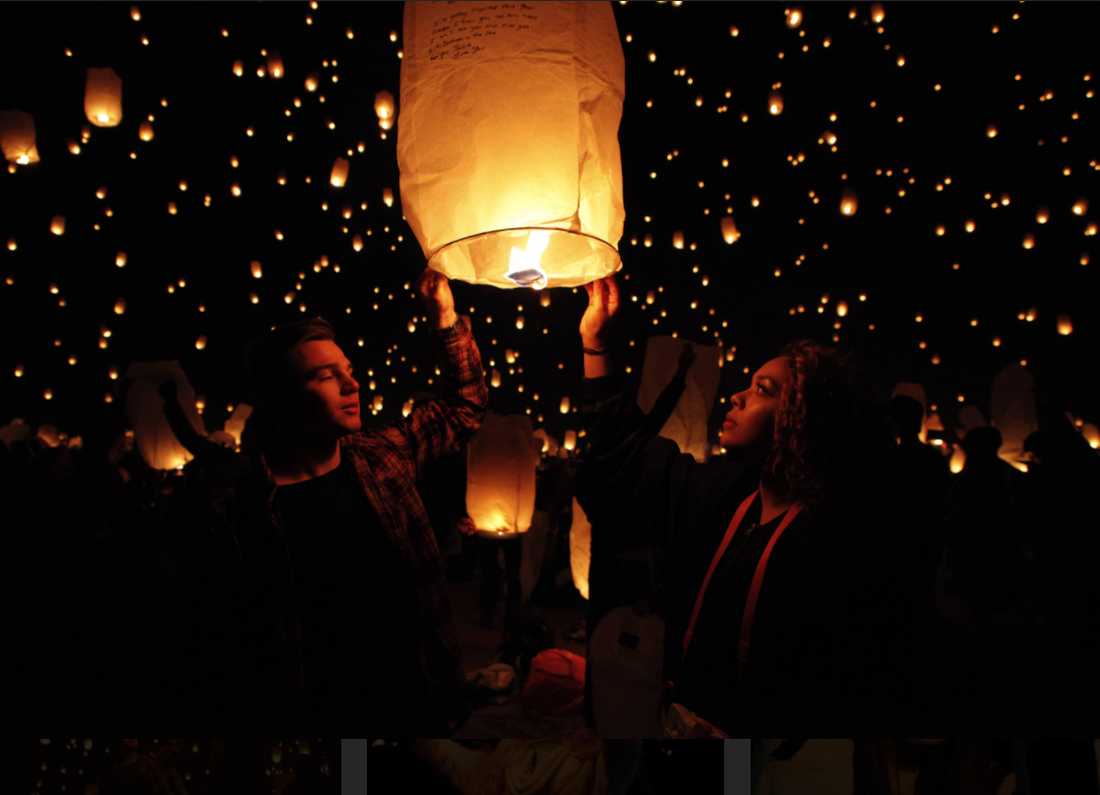
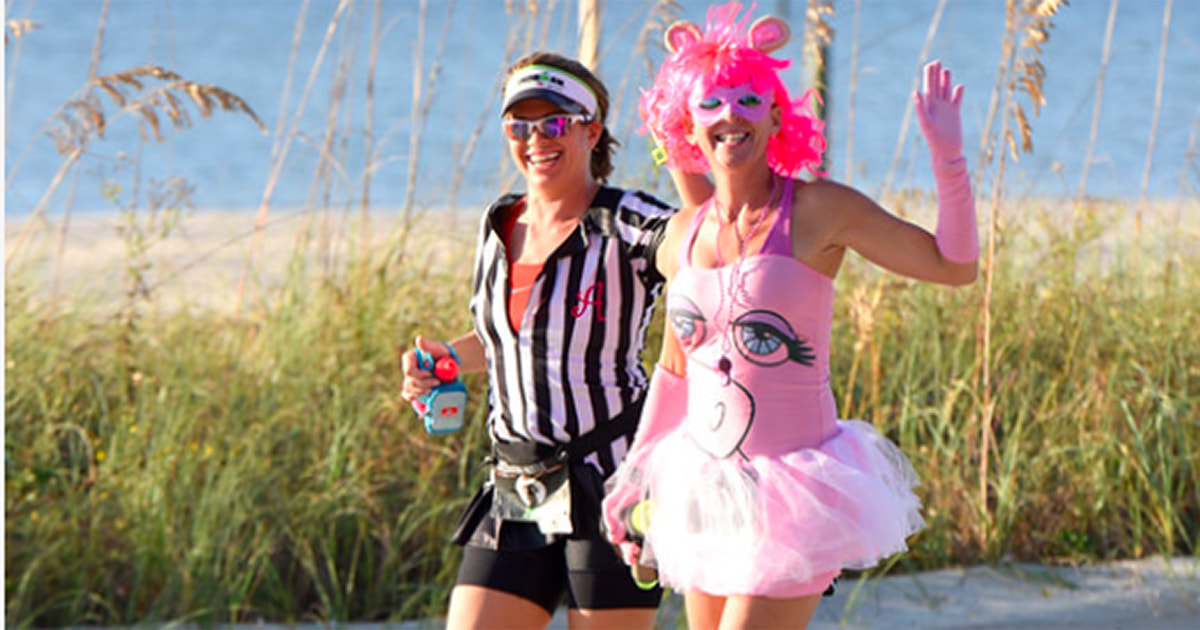

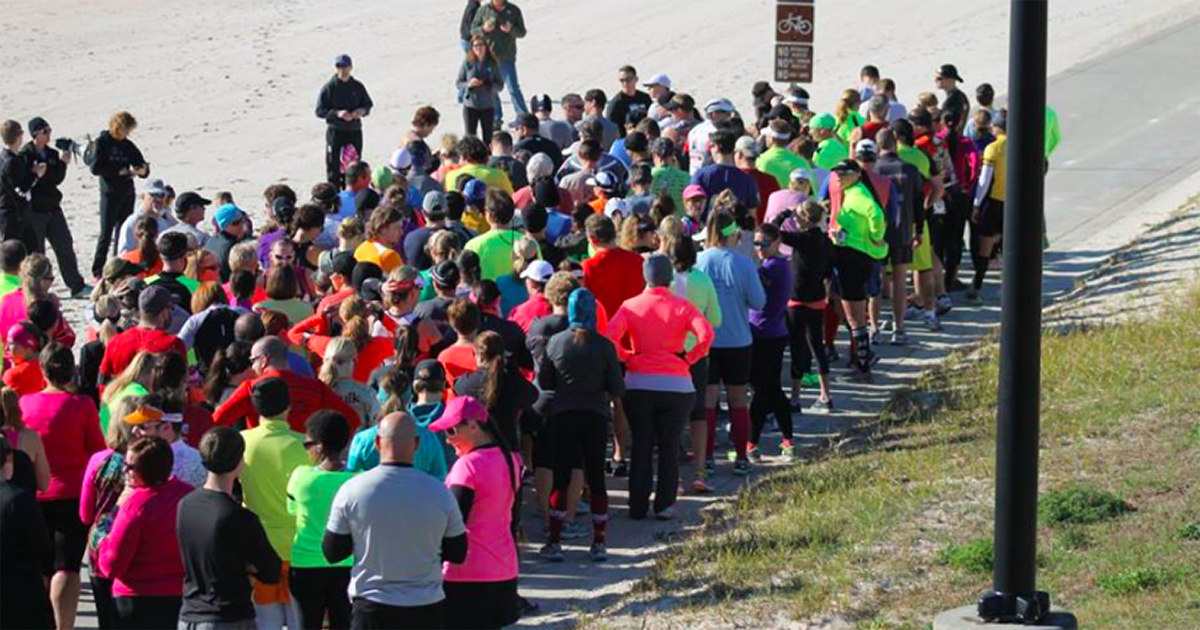

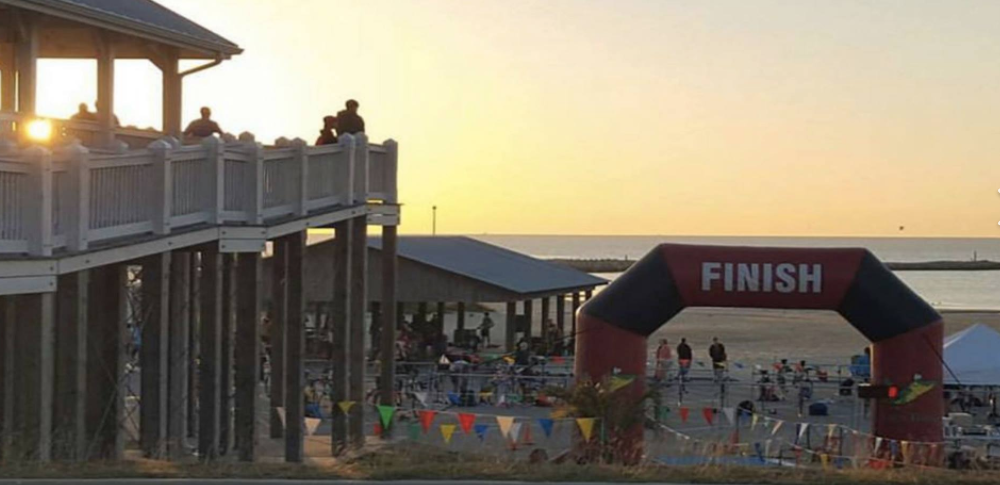


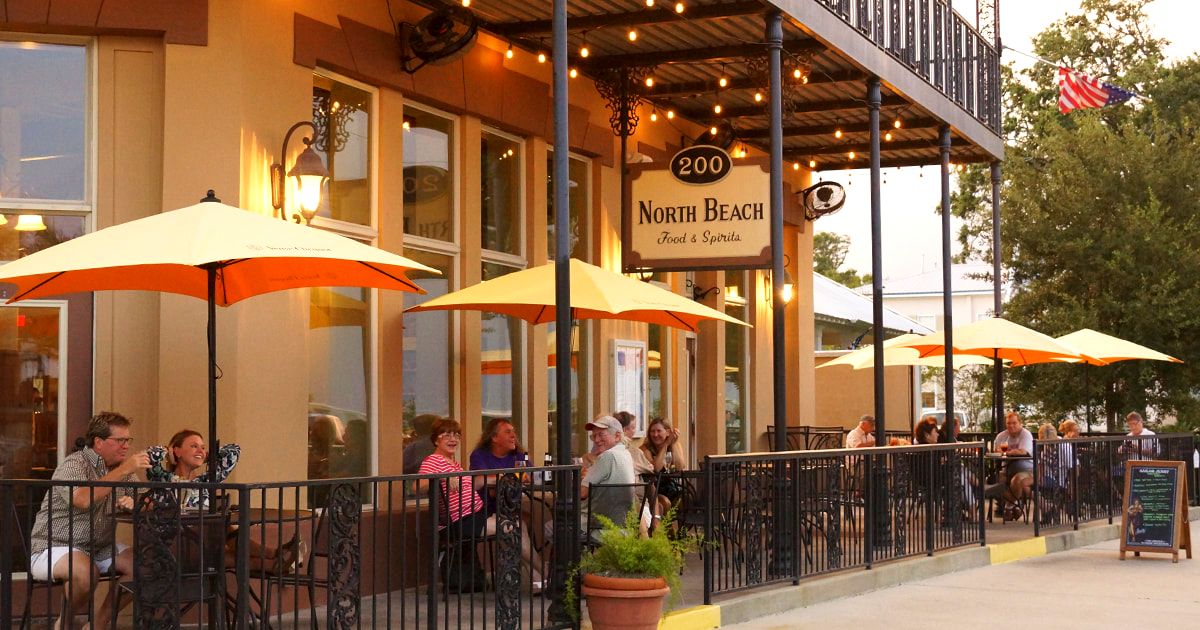
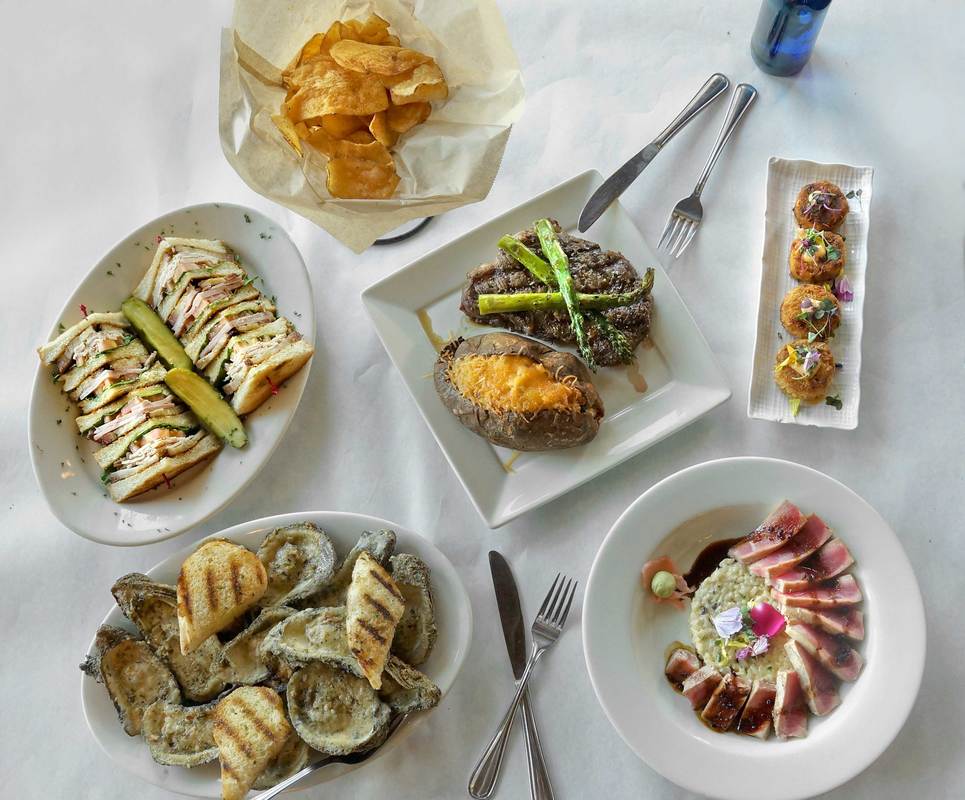
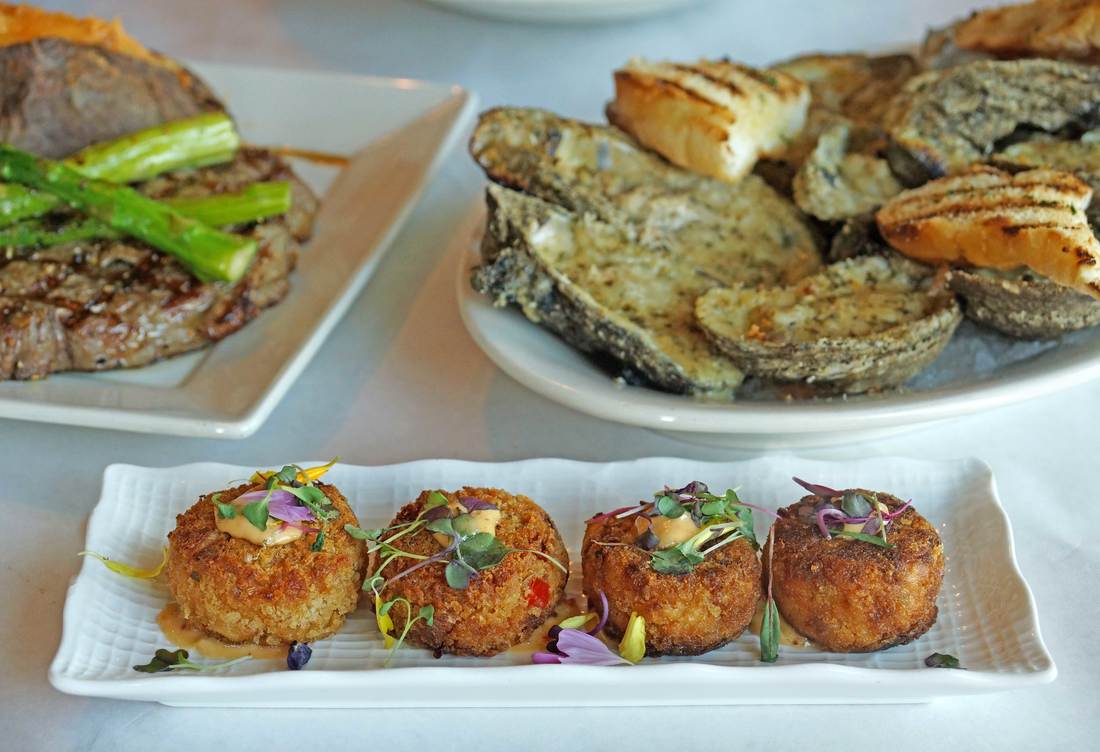
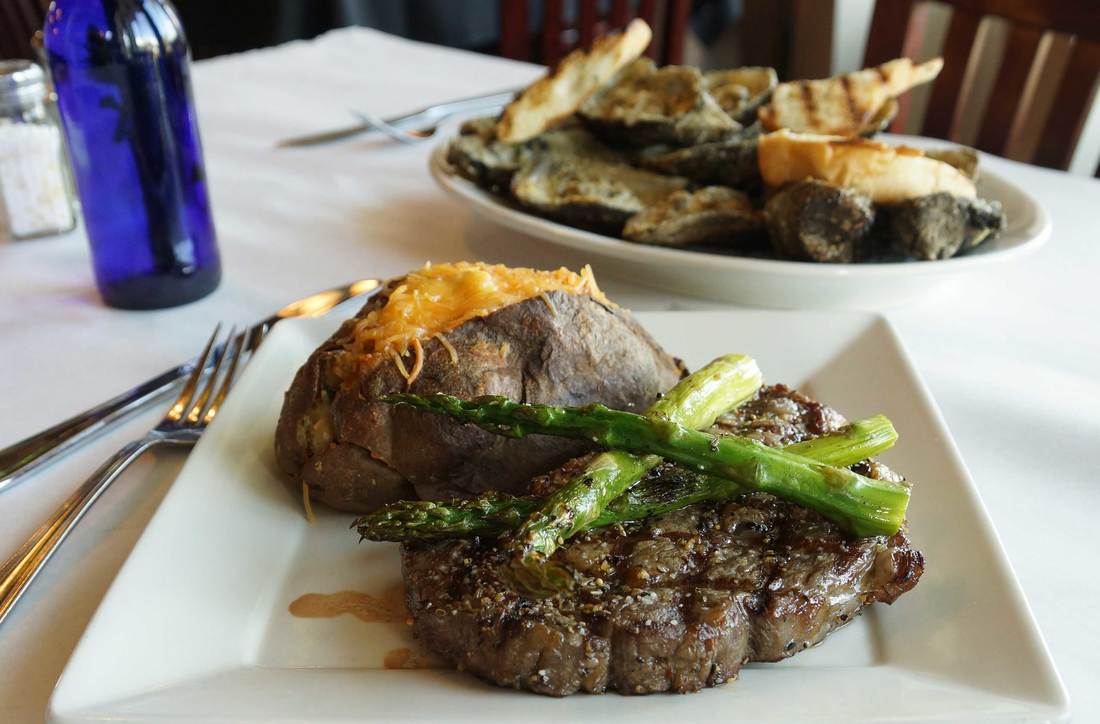
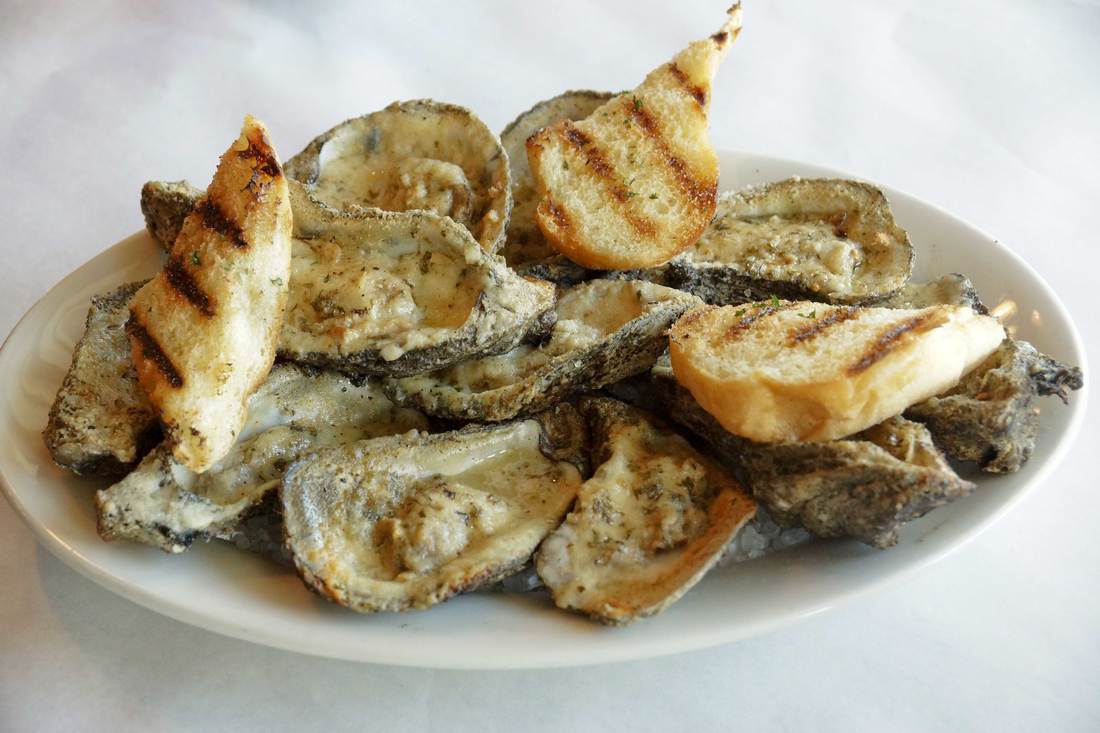
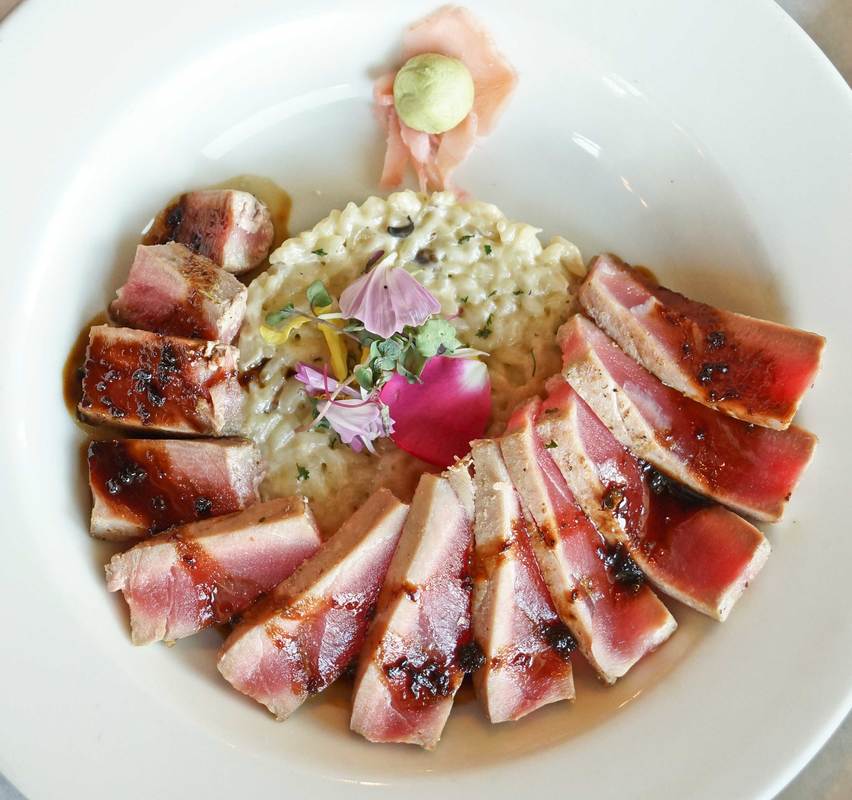
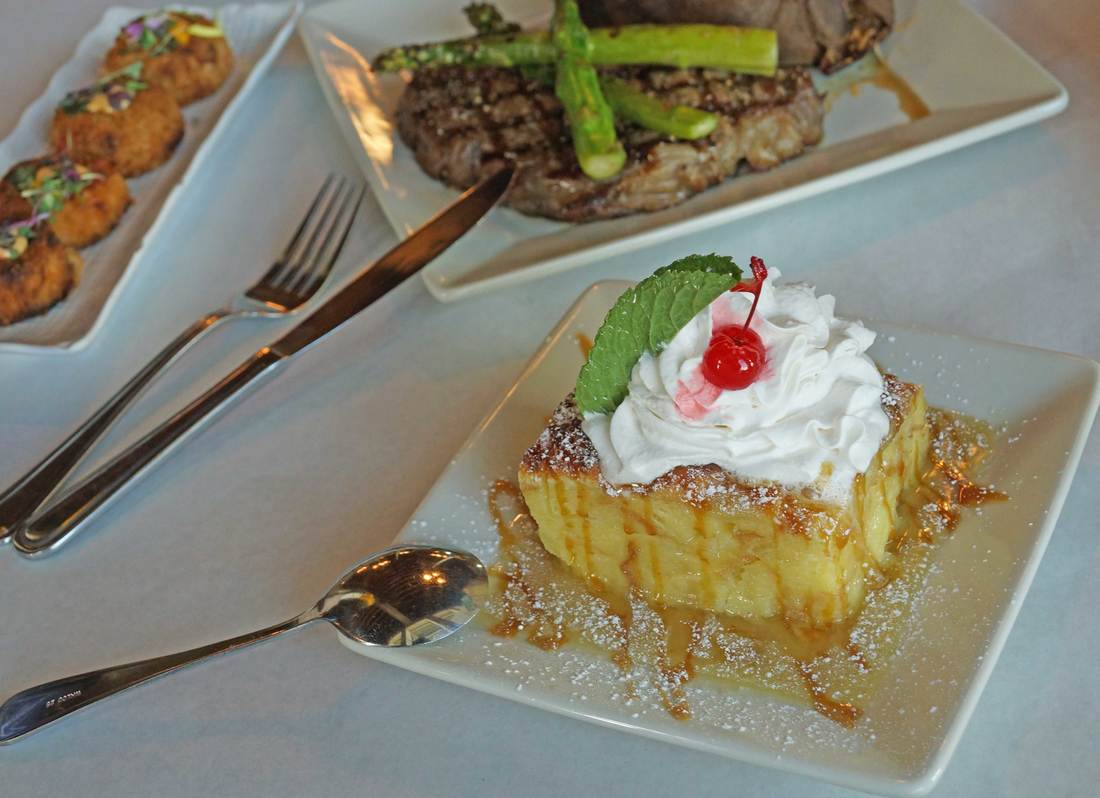

























 RSS Feed
RSS Feed























